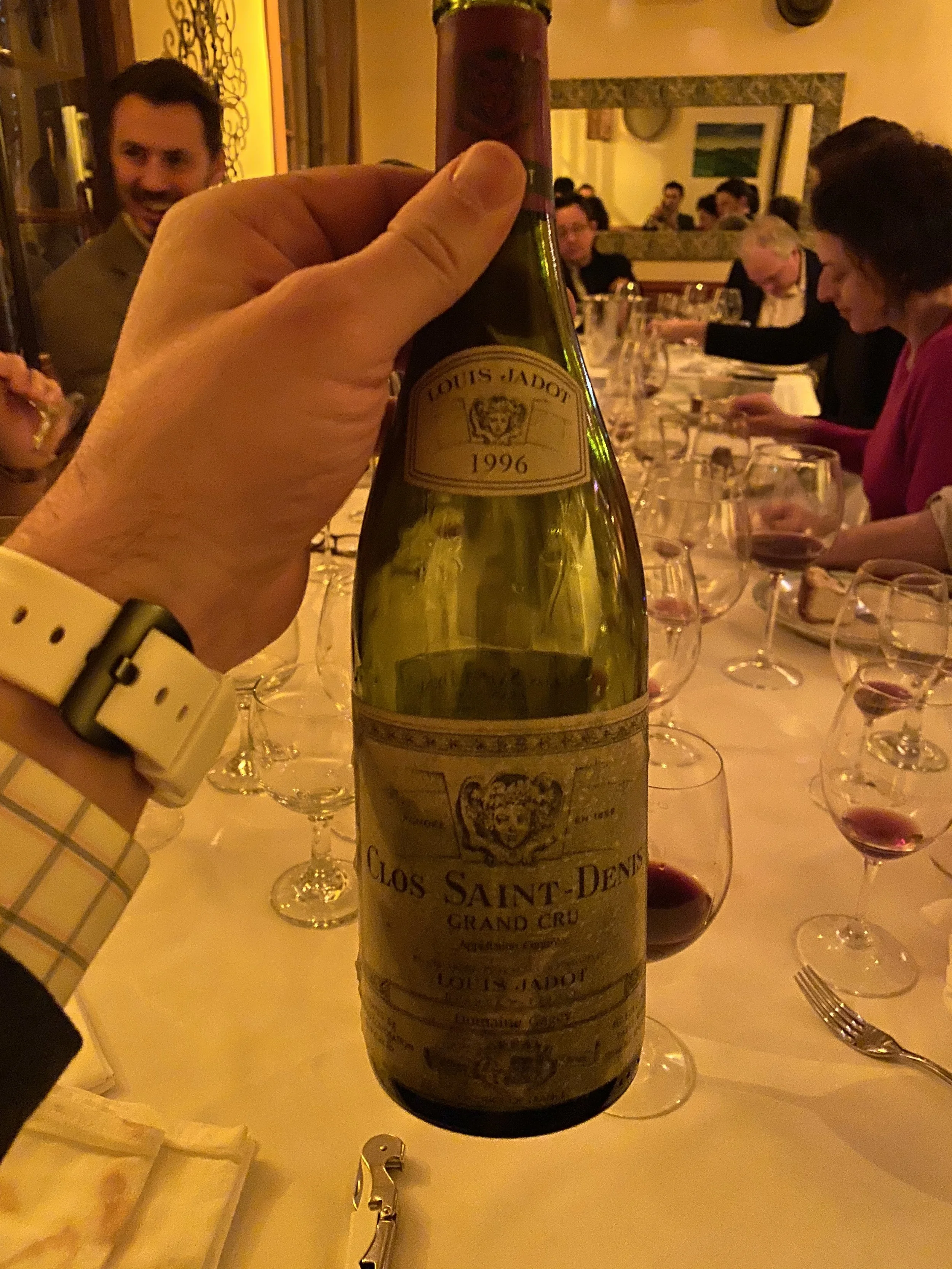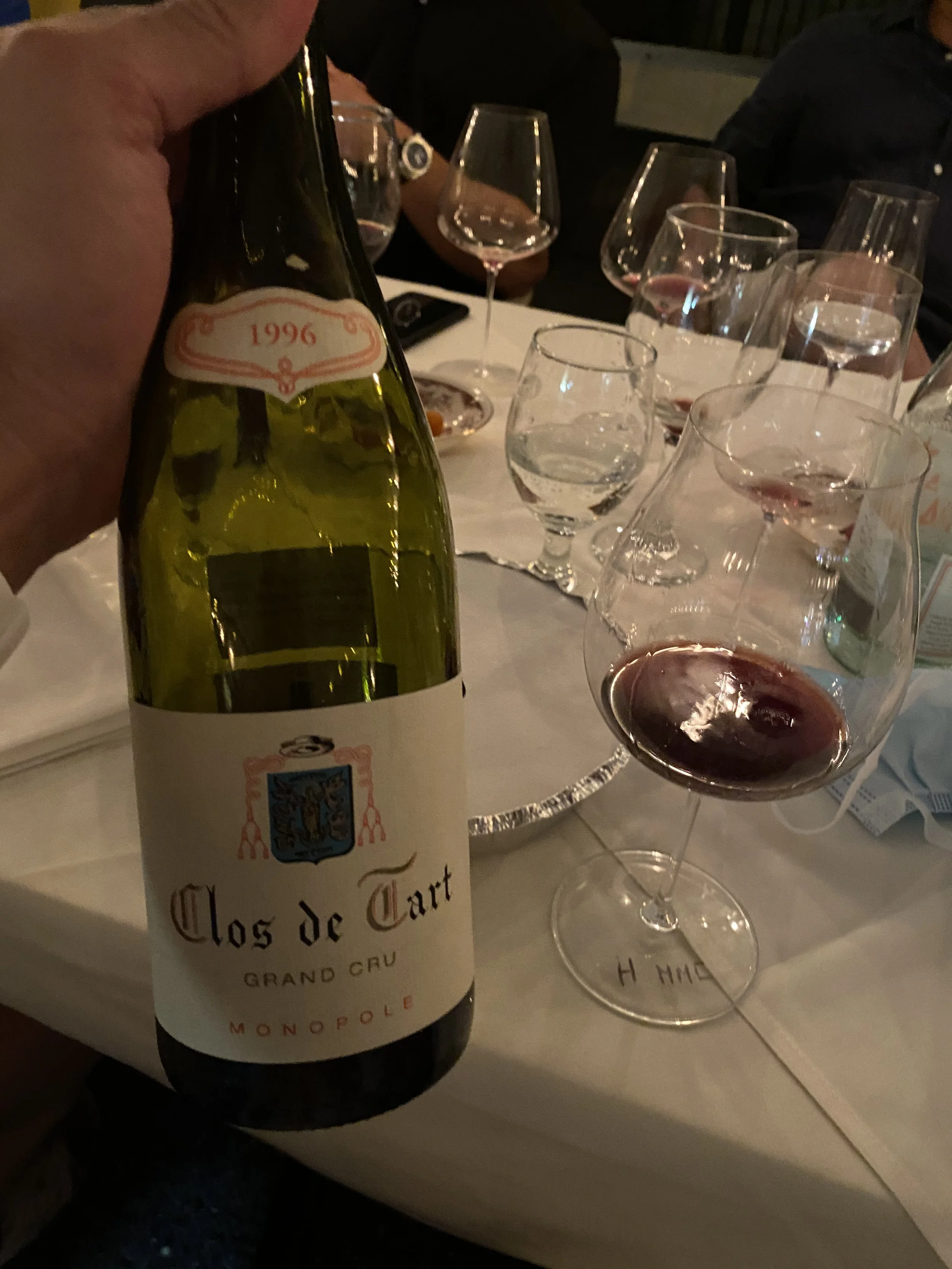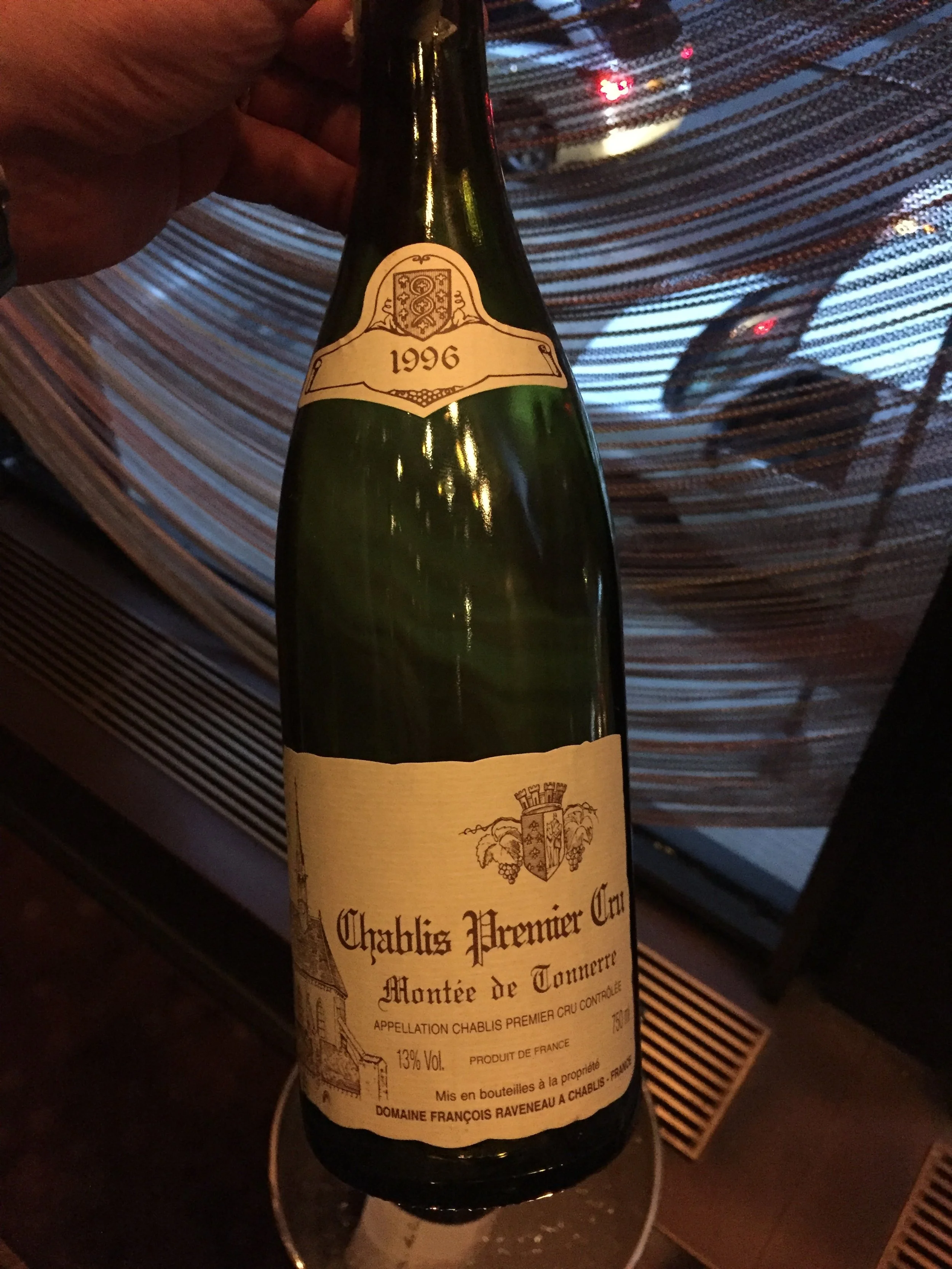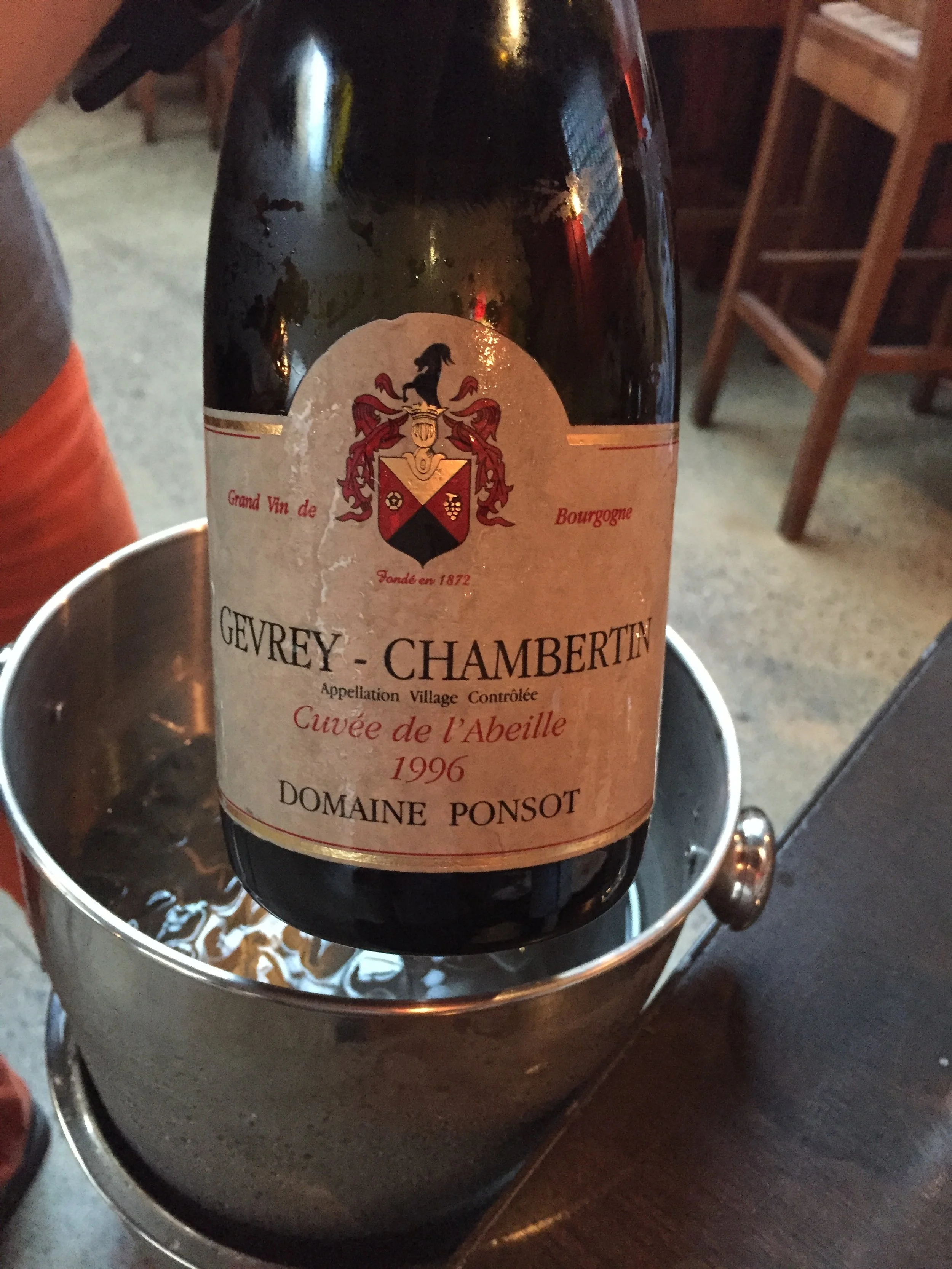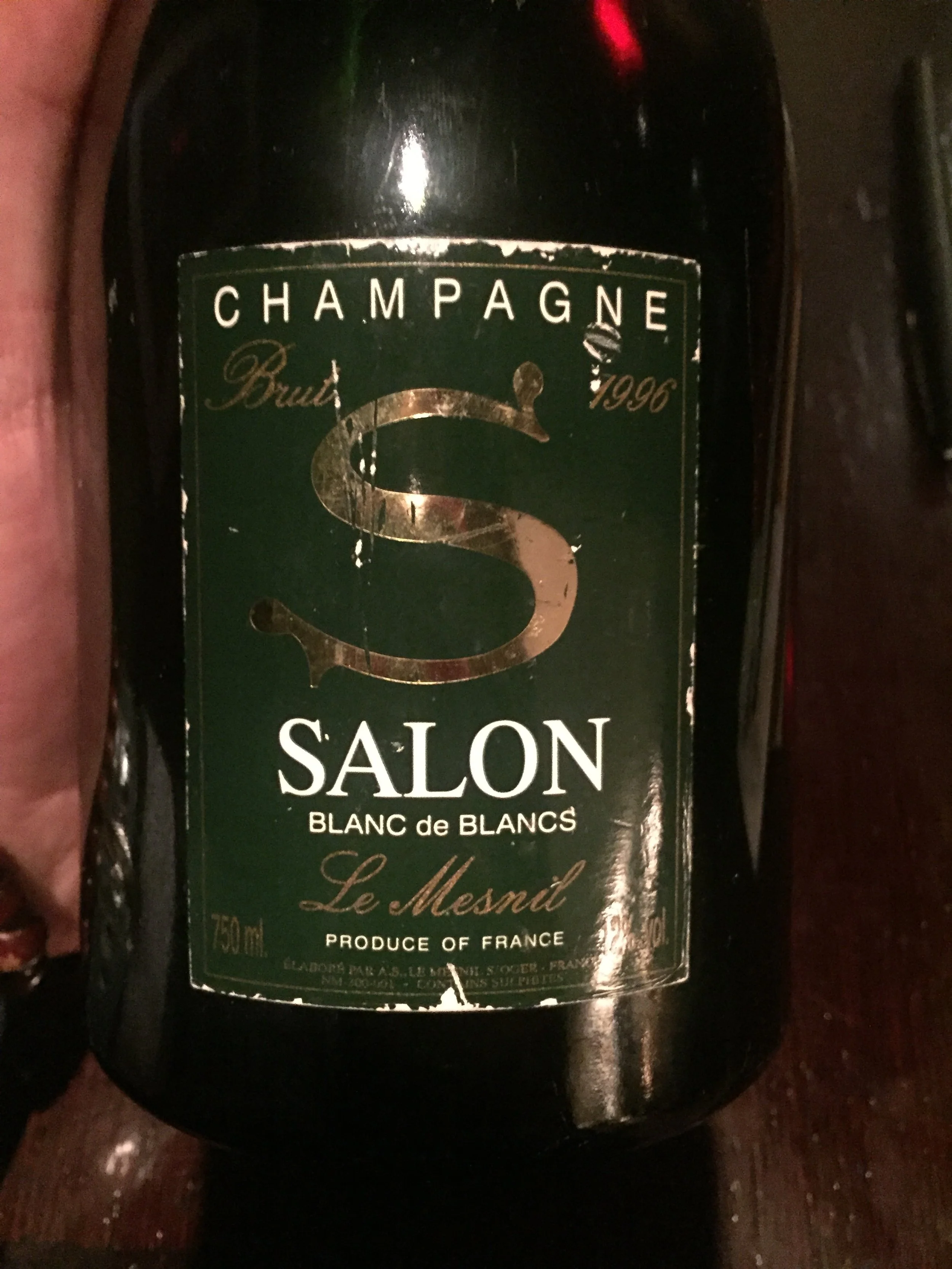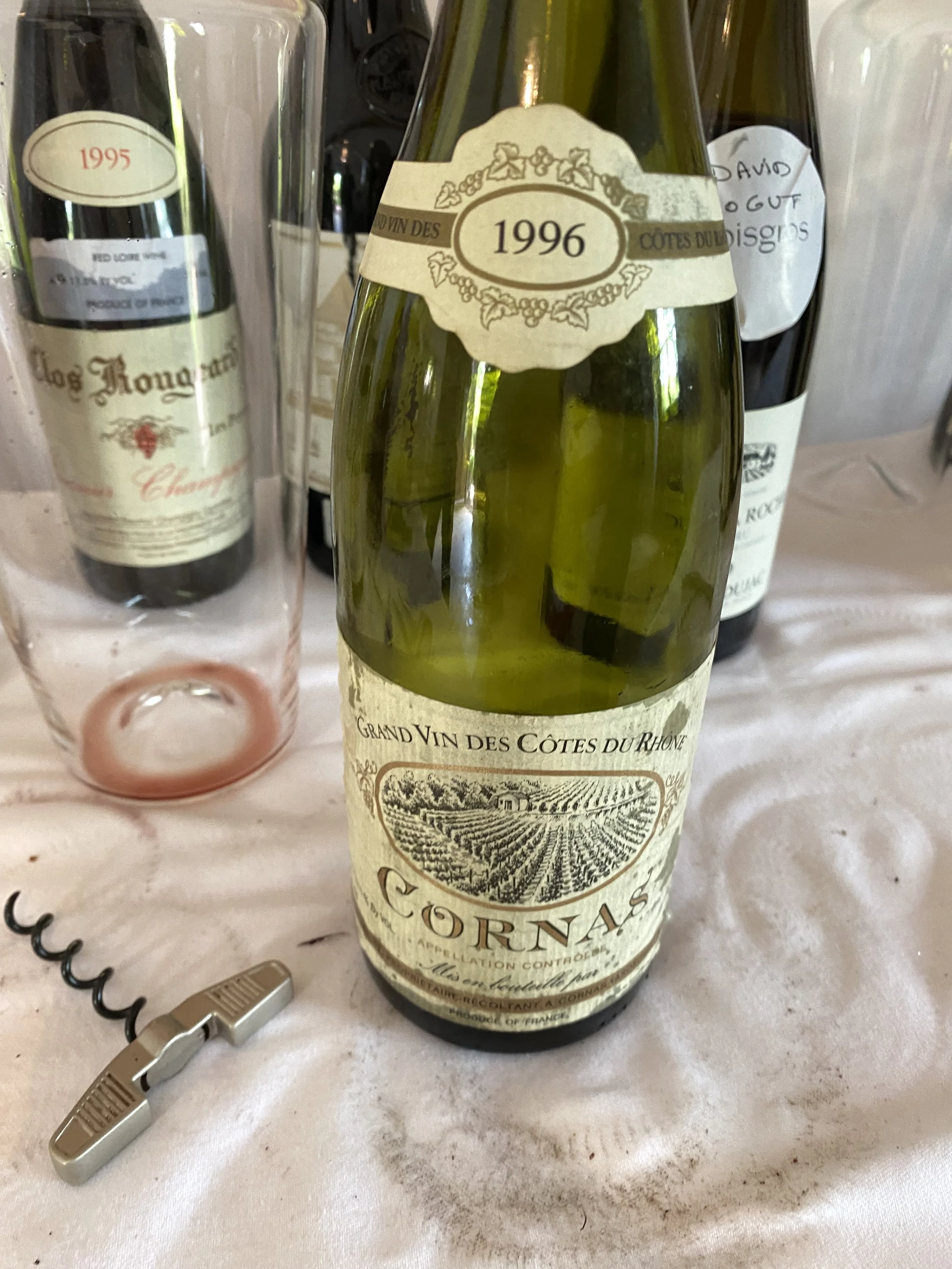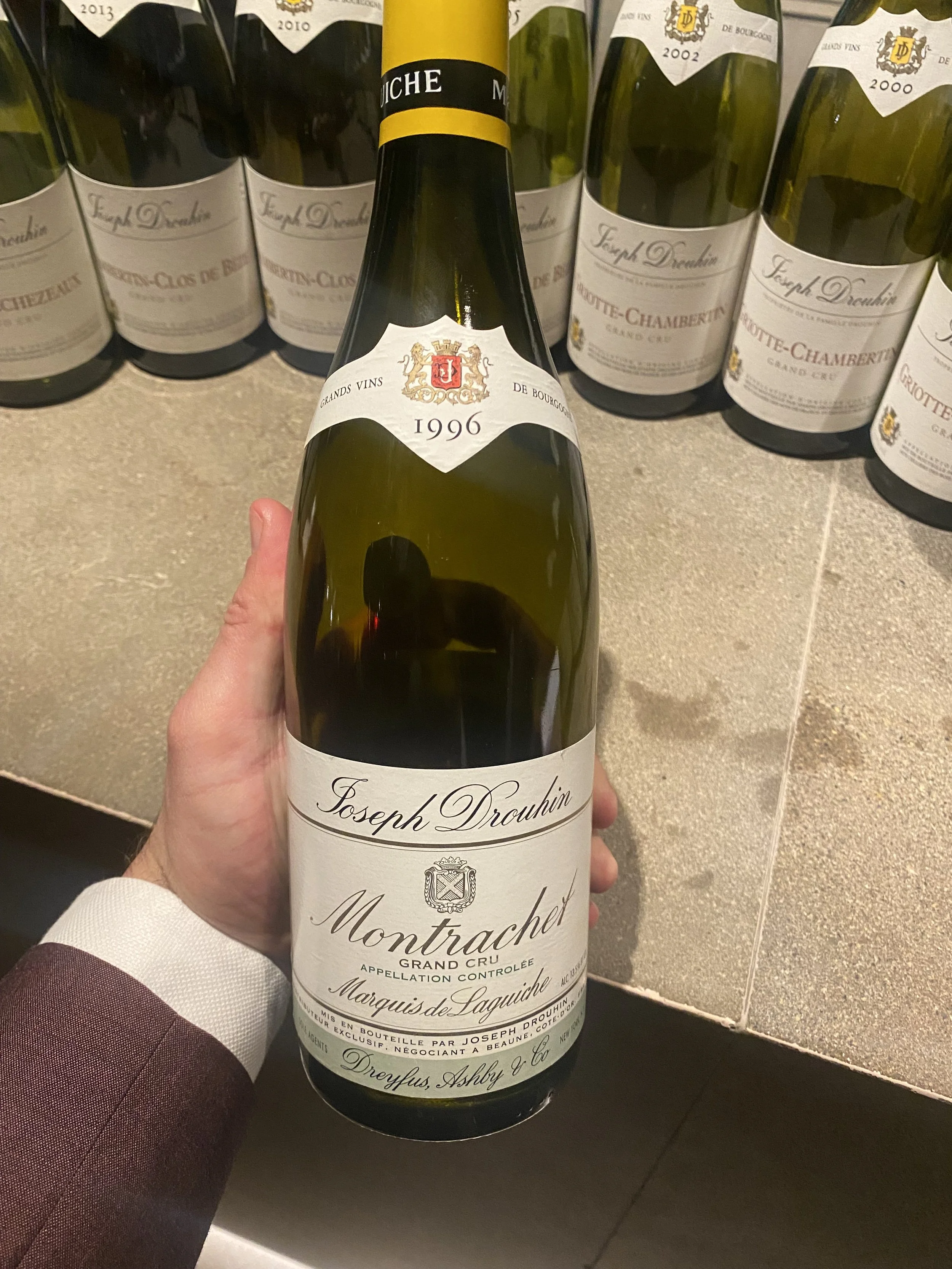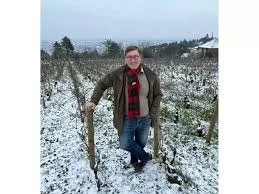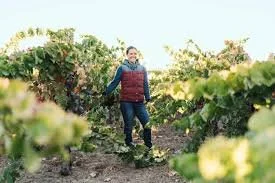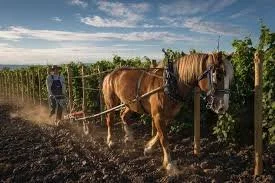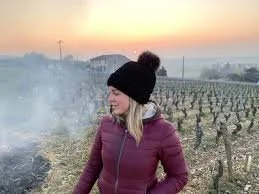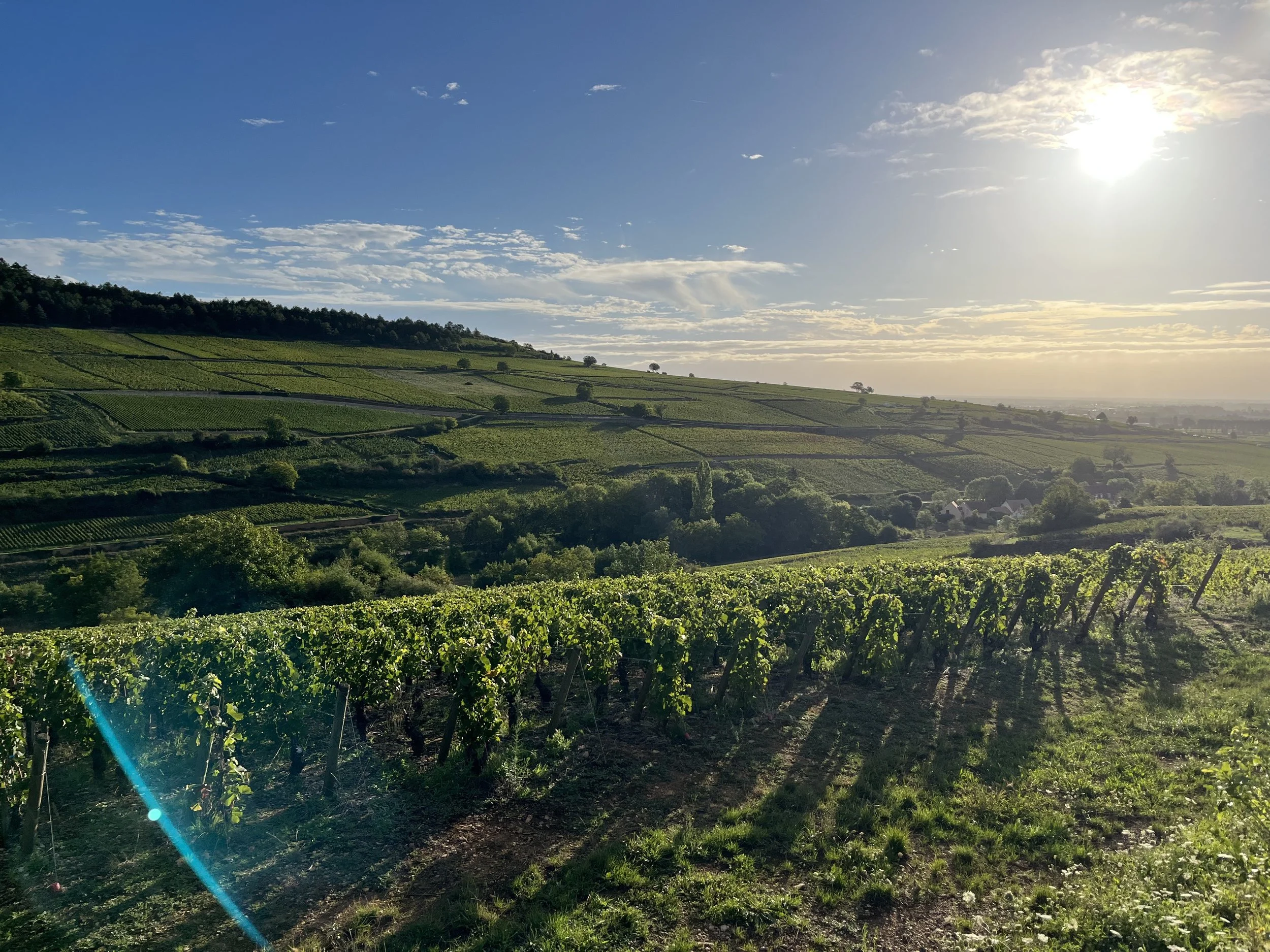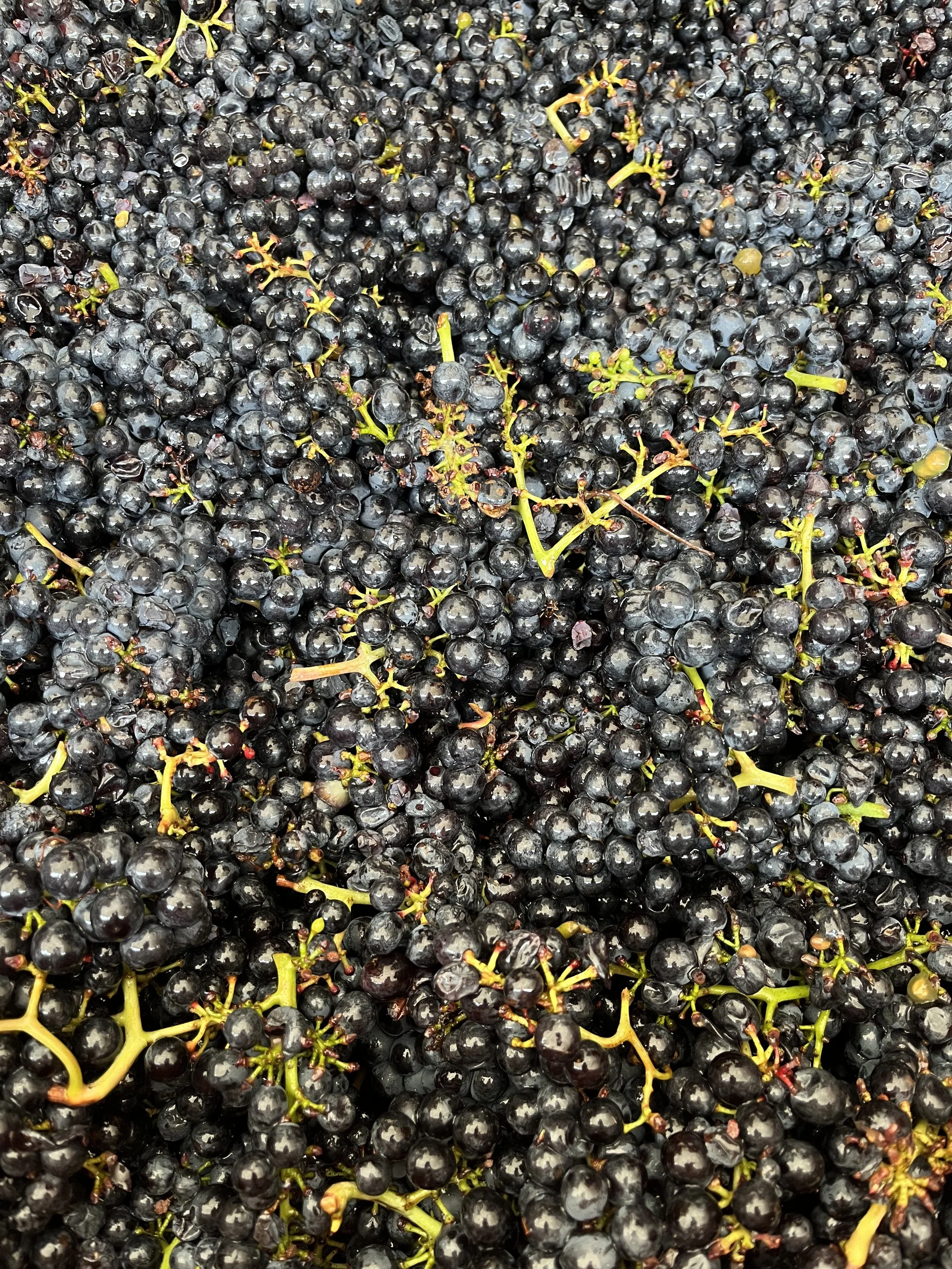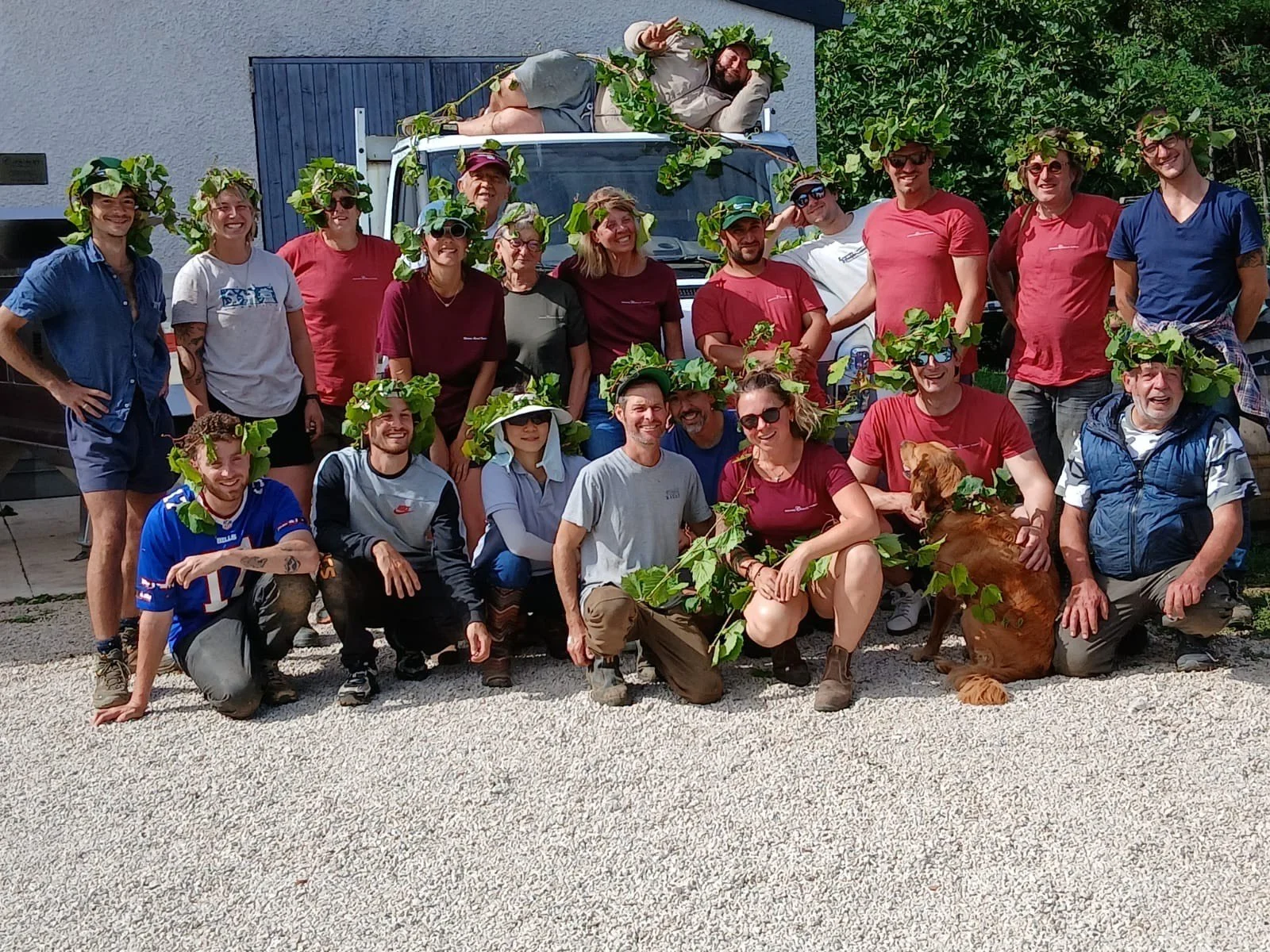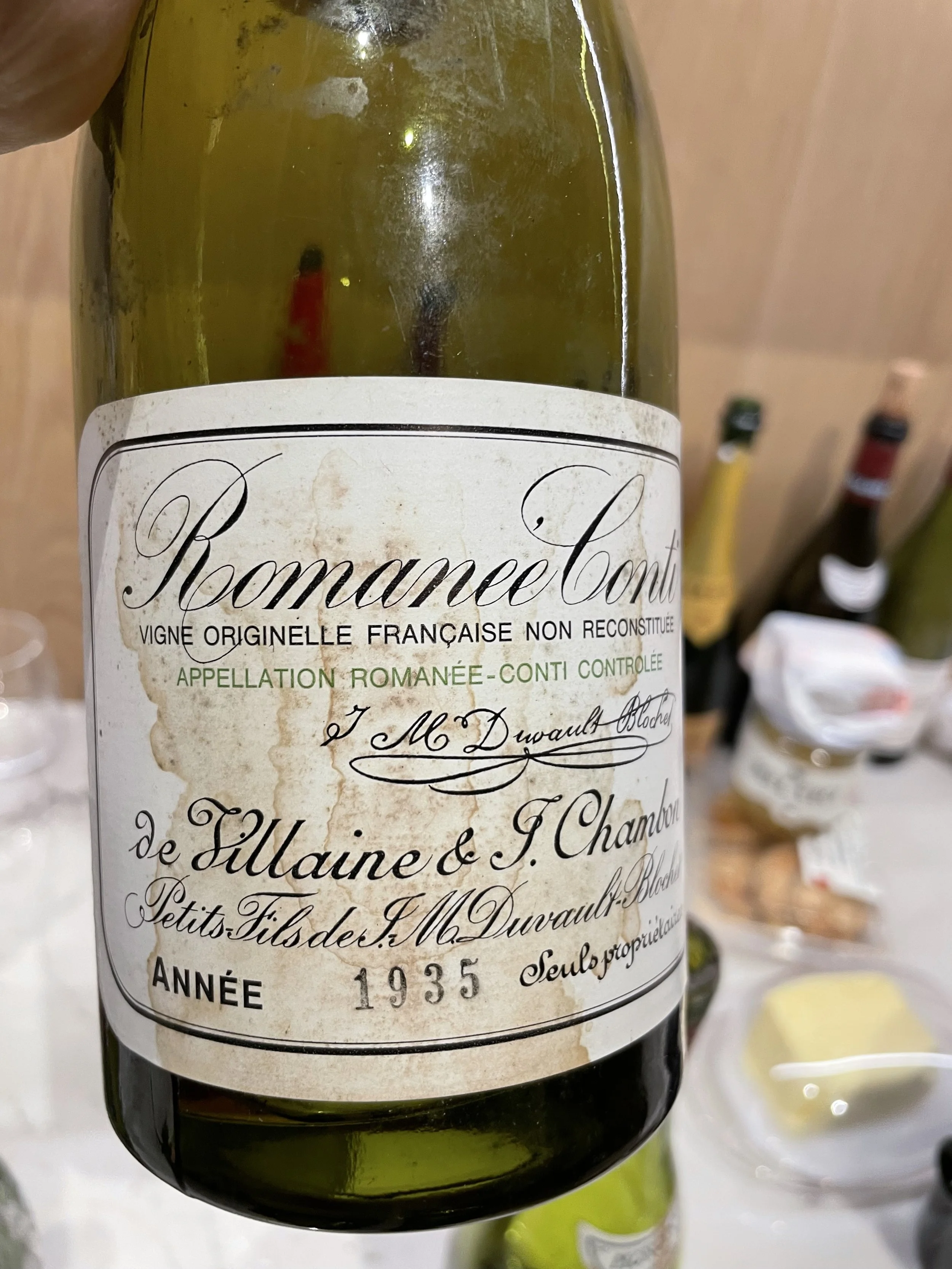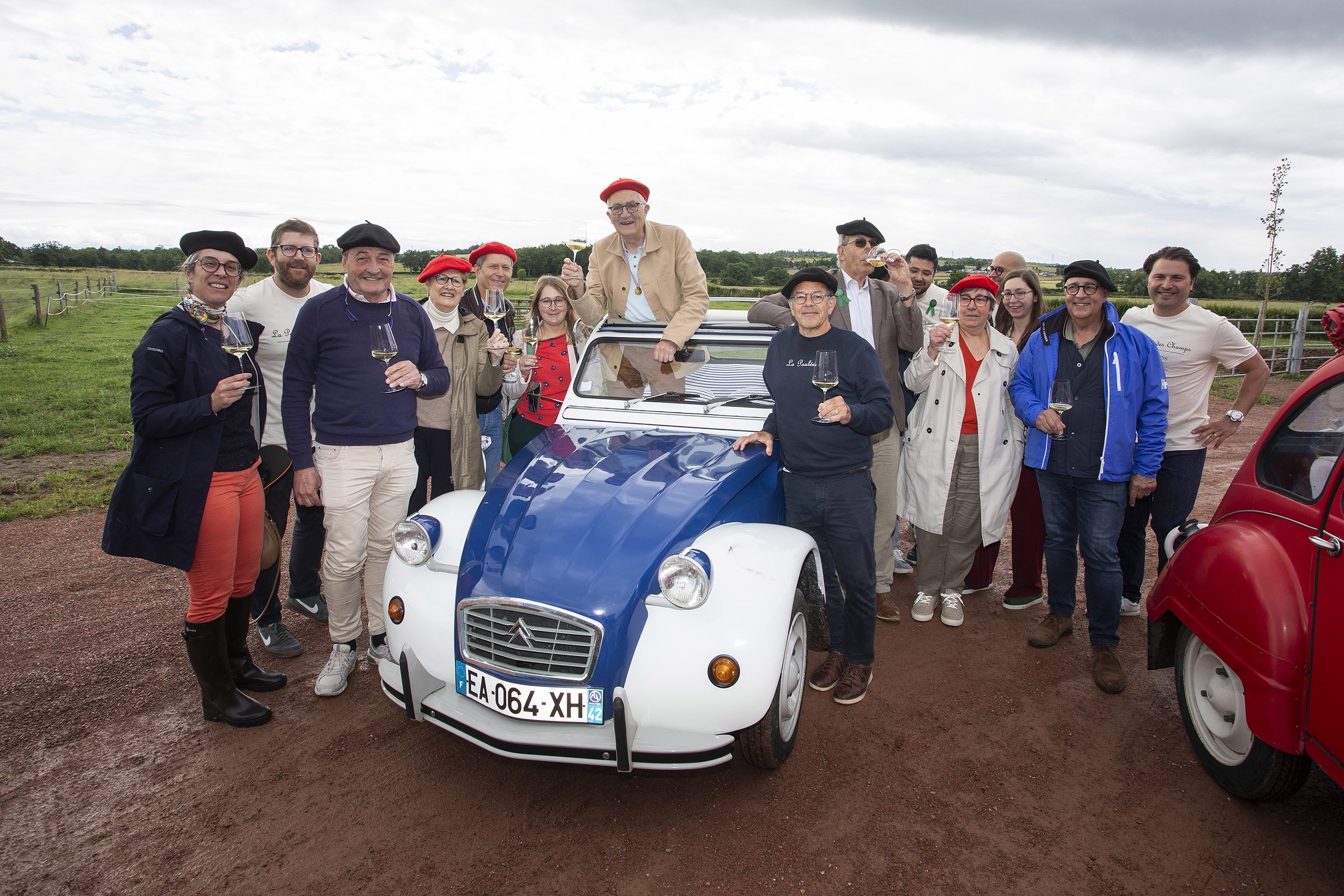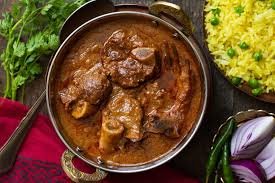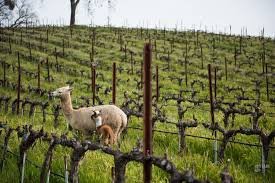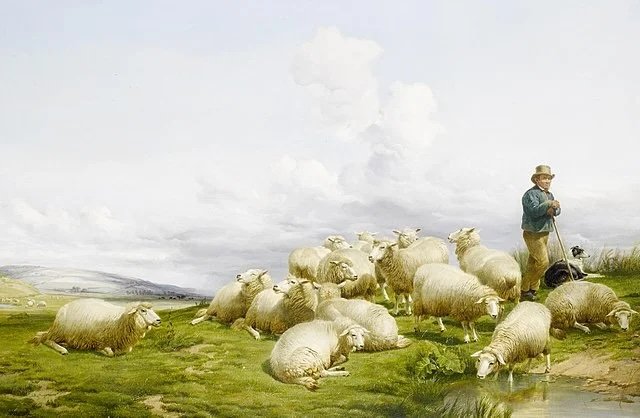1996 in champagne. what happened?
by Edouard Bourgeois
November 21, 2025
Ratings for 1996 often use words like "exceptional" and "grandiose," with some comparisons to 1928. What made 1996 objectively unique was the high average potential alcohol (10.3%) combined with high total acidity (10g/litre)—figures rarely seen together. As Charles Philipponnat noted, this is a significant jump from the 9.3% potential alcohol common forty years prior.
Acidity and potential alcohol work together for balance, but typically, when one is high, the other is low. In 1996, both figures were high. Bruno Paillard called it a 'naughty boy' vintage due to its unpredictable nature and the anxiety it caused producers while waiting for acidity levels to drop. However, the result for those with patience is "fantastic."
While acidity is key for aging, the true test is time. Over two decades later, the remaining 1996 bottles reveal which producers succeeded. The best examples are still complex and alluring, where the high acidity is balanced by a wide range of aromas, from brioche to stone fruit. Unfortunately, some other bottlings show only residual acidity, resulting in unbalanced and tart wines.
I recall opening a glorious bottle of 1996 Cristal for my son's birth seven years ago; the wine was still vibrant and charged.
Another fabulous example was made by Krug. As Olivier Krug said, "It’s a year where a good house or a good winemaker will make a good wine... It’s a tricky vintage." Other industry professionals have shared similar sentiments, noting that some vintners either opted out of making a vintage bottling or failed to achieve balance, resulting in wines that are already clumsy or tired.
The 1996 vintage often draws comparisons to its predecessor, 1995. These were the last two great Champagne vintages following the 1988, 1989, and 1990 trio. The 1996s are powerful wines; the best combine weight from ripeness with tension from acidity, providing the interest, complexity, and structure needed for long-term aging.
Interestingly, more houses released 1995 as a vintage Champagne than 1996, with a ratio of roughly 60% (1995) to 40% (1996).
Given its unpredictability, the safest bet for 1996 Champagne remains to go with producers you trust.
While looking for pictures of 1996 Champagne on my IPhone, I also found several other wines from various regions where the 1996 vintage truly shone, as seen in images below;jbgories
Rosalía’s Love of Sauvignon Blanc: Pop Culture Musings
Nikita Malhotra
December 2, 2025
I am sitting thinking about writing about my favorite holiday wines, or a new wine bar, or a good recipe as a probable next article for this newsletter - and then I let Rosalía’s new album LUX wash over me and in particular her song titled Sauvignon Blanc - my cue to explore what young musicians might be drinking these days. And I am just so tickled about this song, as her voice swells with every Sauvignon Blanc I just sit here in awe and wonder. The AI generated response about the meaning of the song is: “Rosalía's song "Sauvignon Blanc" uses the wine as a metaphor for a simple, fundamental aspect of a spiritual and less materialistic life. In the song, she renounces worldly luxuries, but keeps her love for the wine, which represents a humbler and more loving existence.”
Rosalía
Besides my distrust of AI, I really appreciate this theme in Rosalía’s song, it’s a theme that pulls and tugs at my heart strings, it’s a great mission statement for wine in general. Sometimes as you pour wine worth thousands of dollars into fancy glassware in expensive dining rooms you begin to crave those simple moments, an afternoon watching the sunset in the vineyards, dirt caked shoes and a bistro glass of honest wine. I found a translated article from two years ago that confirms Rosalía’s love of this grape variety, and specifically for Sancerre. I have a bit of distrust of those who claim Sauvignon Blanc as their favorite grape, but there is something endearing with Rosalía’s preference, I might skip getting a bottle of white Burgundy or Riesling and join her in imbibing on some Sancerre, maybe a bottle of Vacheron?
The song itself is also inspired by the story of Saint Teresa of Ávila, a a mystic and writer from Spain who gave up materialistic things due to her devotion to God. Rosalía’s calling out of Sauvignon Blanc is like a contemporary version of Gregorian chants.In a modern world where wine is very much a commodity, how refreshing to see a pop culture moment where it is referenced as a product of nature? Another singer that champions wine is Dua Lipa, and sometimes she writes about it as well on her website, Service95, where you can find an array of talented writers and themes. Dua embraces the world of natural wine and in this article she gives a little background into that. I find both Rosalía and Dua Lipa to have compelling stories and relationship to wine because they are embracing wine in a sense that is detached to the claims of modernity. Whereas some other celebrities might make moves to buy a winery and diversify their financial assets, these two singers are appreciating wine in the same space that wine lovers exist in. Wine brings people together, and brings comfort to us in all matters of life.
Dua Lipa visiting a winery
As the holidays take hold and suddenly I find myself at holiday parties and moments where I want to uncork the flashy bottles in my eurocave, maybe I should enjoy the simple act of drinking a glass of wine, no frills, and with the same sentiment that I did on a warm day in August. Maybe it might be the unusual choice for me, a glass of Sauvignon Blanc, a toast to Rosalía.
1996 in Champagne. What happened?
Ratings for 1996 often use words like "exceptional" and "grandiose," with some comparisons to 1928. What made 1996 objectively unique was the high average potential alcohol (10.3%) combined with high total acidity (10g/litre)—figures rarely seen together. As Charles Philipponnat noted, this is a significant jump from the 9.3% potential alcohol common forty years prior.
Acidity and potential alcohol work together for balance, but typically, when one is high, the other is low. In 1996, both figures were high. Bruno Paillard called it a 'naughty boy' vintage due to its unpredictable nature and the anxiety it caused producers while waiting for acidity levels to drop. However, the result for those with patience is "fantastic."
While acidity is key for aging, the true test is time. Over two decades later, the remaining 1996 bottles reveal which producers succeeded. The best examples are still complex and alluring, where the high acidity is balanced by a wide range of aromas, from brioche to stone fruit. Unfortunately, some other bottlings show only residual acidity, resulting in unbalanced and tart wines.
I recall opening a glorious bottle of 1996 Cristal for my son's birth seven years ago; the wine was still vibrant and charged.
Another fabulous example was made by Krug. As Olivier Krug said, "It’s a year where a good house or a good winemaker will make a good wine... It’s a tricky vintage." Other industry professionals have shared similar sentiments, noting that some vintners either opted out of making a vintage bottling or failed to achieve balance, resulting in wines that are already clumsy or tired.
The 1996 vintage often draws comparisons to its predecessor, 1995. These were the last two great Champagne vintages following the 1988, 1989, and 1990 trio. The 1996s are powerful wines; the best combine weight from ripeness with tension from acidity, providing the interest, complexity, and structure needed for long-term aging.
Interestingly, more houses released 1995 as a vintage Champagne than 1996, with a ratio of roughly 60% (1995) to 40% (1996).
Given its unpredictability, the safest bet for 1996 Champagne remains to go with producers you trust.
While looking for pictures of 1996 Champagne on my IPhone, I also found several other wines from various regions where the 1996 vintage truly shone, as seen in images.
I now would like to invite you to join me on December 3rd to taste the golden era of Champagne at our favorite Omakase restaurant Sushi Nakazawa. Click here to save your spot!
To Till Or Not to Till
Nikita Malhotra
October 31st, 2025
Recently I was part of a conversation with young sommeliers, we were talking about Oregon, and many had fresh experiences from winery visits and working harvests. We were in dialogue about farming techniques; and then I overheard someone exclaim that “Tilling is evil!” She did it in a way that the whole room went silent, many nodded in agreement to this puritanical statement, whereas I looked both amused and concerned. I have never been dogmatic in my opinions on farming or viticultural practices, as these choices stem from ideas steeped either in history and culture or on very personal relationships with the land and with the vision of farming. No one makes wine in the same way.
But from this conversation I saw an interesting schism in a dialogue that was once just described as conventional farming vs. natural or organic farming. Now we talk more about regenerative agriculture, which has been a movement that evolves from organic and biodynamic farming. The key message of regenerative agriculture is that if you leave a soil covered with a permanent mat of vegetation it will become an important store of carbon through the build-up of organic matter. In California and Oregon, young farmers are very concerned with tilling, as it poses a threat to soil health, something that is essential to regenerative farming.
Tilling is still very important in classic regions such as Burgundy, and it is more interesting when we consider soil erosion being an issue there as well. Some producers will point at the different soil types being at the center of understanding tilling, with clay there shouldn’t be as much of a worry. But that would still be at odds with regenerative farming.
I started posing this question to winemakers, and here are some of the responses I got. It will continue to be an topic I will investigate, but thought that these different answers might encourage us all to think about this topic. I might not be the girl that screams that tilling is evil, but maybe I can inspire your next question to a winemaker.
William Kelley
“That’s a very open-ended question on a subject that is very complex and situation-dependent. In Burgundy, with our soils and planting densities, I would go so far as to say that it is in most instances essential. But the nature of the tilling itself, especially as regards depth and timing, is hugely important for its positives and negatives.”
Martha Stoumen
Ooo, this is my favorite type of question. And CA is so different than Burgundy (rain patterns, weather, soil all completely different)
Since I dry farm the vineyard I lease and farm, I was always taught by the old timers in the Ukiah area that you need to till/cultivate the soil to create a dirt mulch to wick water up higher in the profile during the late summer (the hottest & driest time of year).
While the old timer’s vineyards look VERY healthy—especially for 75+ year old vines—I was worried about breaking up mycorrhiza in the soil (esp AMF that are adapted to survive dry CA summers—see brief article link about AMF and grapevines). We stopped tilling two years ago and moved towards using a roller-crimper to create a straw mulch rather than a dust mulch. Currently—during the hot, dry summer—the vineyard floor is still very hard even with the dry grasses crimped (crimped so we don’t have bare exposed soils). We’re in transition period for the next few years. Long term (5 years or so) the soils should soften—more towards that springy “forest floor” feeling. Domaine Leon Barral, where I worked in the South of France (much more like CA weather-wise at least), was successful using a roller-crimper long term.
Long story short:
AMF are not the only consideration, but they are very important to grapevines (similar to our own gut microbiome, for grapevines AMF increase resiliency against pests and disease, and increase mineral and water availability). So I’m a fan of anything that helps/doesn’t impede this relationship, including no till. And I’m willing to have patience during this transition period in my own vineyard.
Of course, every vineyard (like every body) is different, so practices need to be fine tuned to each unique site.
Camille Thiriet
Yes we are tilling, both with the tractor and with horses. Ideally we would use the horse everywhere as it is much less compaction on the soil and no diesel obviously! But it is too cost prohibitive to do all of the vineyards like Bourgogne with this method, otherwise we would have to raise the price. Also it is difficult to do 5 hectares with a horse because the timing is so tight with the weather if it’s too dry they can’t go and same if it is too wet. So we use the tractor everywhere else. We try to go as little as possible one griffage to open the soil in spring and help the compost and fertilizer enter into the soil. A second griffage to put everything « a plat » and then one or two passages of intercep to stop the weeds under the vines. In burgundy the weeds can be pretty invasive « ronce, chardons, liseron, etc » dans une année sec ça peut tirer beaucoup sur la vigne, baisse de rendement, feuille qui sèche etc) in wet years a cover crop can be beneficial but still needs to be taken care of and cut or removed at some point in the year. So lots of options to consider and nothing is the perfect solution you have to adapt to the soil the site the year and the financial considerations. Hope this helps! Matt ( Camille Thiriet)
Pressoir 1990’s Burgundy Dinner - Recap
Pressoir 1990’s Burgundy Dinner - Recap
by Edouard
9/26/25
Edouard Bourgeois
September 26, 2025
I'm excited to share a recap of the exceptional wines we had the pleasure of tasting last week at Gabriel Kreuther. The 1990s were a truly generous decade for Burgundy, offering wonderful vintages for both white and red wines. These vintages feel like they belong to a different era than our current one, where global warming and early harvests are the norm. Yet, tasting these 90's wines today proves that the best producers were able to maintain balance and acidity, even in what were considered "hot" years like 1990 and 1999.
We began the evening with a Bouchard Père et Fils Domaines du Château de Beaune Corton-Charlemagne Grand Cru 1991. Philippe Prost, the winemaker at the time, crafted an excellent 1991. Bouchard's valuable 4-hectare parcel in Corton-Charlemagne, located just below the wooded area of the famous Corton hill, yielded a youthful wine, thanks in part to the magnum format, which was a perfect start to the night.
The first course featured an incredible flight of Domaine Coche-Dury:
Domaine Coche-Dury Meursault Les Rougeots 1999
Domaine Coche-Dury Meursault Les Rougeots 1996
Domaine Coche-Dury Meursault 1er Cru Perrières 1990
When tasting Coche wines, their singular character always stands out. After researching and even meeting Jean-François Coche himself, I believe this singularity stems from an unparalleled dedication to their craft. It's said the Coches are the first in the vineyard in the morning and the last to leave. Their farming is more akin to gardening, with meticulous attention given to each vine and grape, alongside an exquisite selection of barrels, all part of a slow, "old school" process. This dedication is perfectly encapsulated by the French expression "le bon sens paysan." These three wines were particularly open and expressive. The Rougeots 1999 showcased the domaine's intense reductive signature, beautifully complemented by floral notes and flint. The 1996 Rougeots revealed more of that delightful "popcorn" character. The Perrières 1990, despite its age, was initially more restrained and almost austere, but after aeration, it truly blossomed into an explosive display.
For our second course, we enjoyed a selection from Domaine Michel Lafarge:
Domaine Michel Lafarge Volnay 1er Cru Clos du Château des Ducs 1999
Domaine Michel Lafarge Volnay 1er Cru Clos des Chênes 1991
Domaine Michel Lafarge Volnay 1er Cru Clos des Chênes 1990
Our relationship with the Lafarge family has granted us access to incredible library wines from their 13th-century cellar in Volnay. We are always impressed by the impeccable condition of these bottles, even when covered in a thick layer of mold. Unfortunately, the 1999 Clos du Château des Ducs was faulty, but the other two wines were singing. Clos des Chênes is located in the south of the Volnay appellation, and the Lafarge's tiny 0.9-hectare plot sits just above Caillerets (another climat where they farm a unique spiral-shaped vineyard). While 1990 red Burgundy can sometimes exhibit "hot" characteristics with cooked fruit aromas that aren't always appealing in Pinot Noir, this Clos des Chênes surprised us with remarkable brightness and lift.
The third course highlighted two esteemed négociant houses:
Louis Jadot Bonnes Mares Grand Cru 1990
Louis Jadot Chambertin Clos de Bèze Grand Cru 1990
Joseph Drouhin Griotte-Chambertin Grand Cru 1990
Louis Jadot, a renowned Beaune-based négociant house founded in 1859, cultivates 270 hectares across Burgundy's most prestigious vineyards. In the 1990s, the highly respected Jacques Lardière was in charge of winemaking. His artistic personality, paired with the generous vintages of that decade, perfectly aligned to produce flamboyant wines. Jadot's plot in the Grand Cru Bonnes Mares has a lower calcium content, often resulting in more robust wines. The Clos de Bèze was, regrettably, corked, but we successfully replaced it with a very good Louis Jadot Clos Vougeot 1993 from Kreuther's wine list. As for the Griotte-Chambertin by Drouhin, it did not disappoint. This famous Drouhin holding is tiny—only half a hectare out of Griotte's already small total area of 2.7 hectares—making it a collector's trophy that is hard to find but always rewarding (the 2000 vintage is exceptional!). Griotte-Chambertin is a Grand Cru among Grands Crus, literally surrounded by Chapelle-Chambertin, Charmes-Chambertin, Clos de Bèze, and the king, Chambertin itself.
Finally, we reached a "mic drop" moment with an incredible vertical of Domaine de la Romanée-Conti:
Domaine de la Romanée-Conti Echezeaux Grand Cru 1990
Domaine de la Romanée-Conti Richebourg Grand Cru 1990
Domaine de la Romanée-Conti La Tâche Grand Cru 1990
These wines were deliciously accessible, incredibly aromatic, yet refined. At DRC, It's always fascinating to experience the distinct character of each of these climats, offering a true Burgundy masterclass. The flight showcased the rather light Echezeaux, the more robust Richebourg, and the ethereal La Tâche. All three were sensational and in a perfect phase of their life. Similar to the Lafarge Clos des Chênes 1990, there was surprisingly no trace of that "hot vintage Pinot Noir" character whatsoever. Instead, the trio delivered rich and noble red fruit, along with more subtle violet and earthy notes, beautifully complemented by the distinctive vegetal undertones provided by whole cluster fermentation.
Harvest 2025 in Burgundy
by Daniel Johnnes and Justine Puaud
9/11/2025
I have tried to visit the vineyards of Burgundy, Champagne or the Rhone just before harvest for the last 25 or 30 years. My calendar doesn’t always allow me to do it and the vagaries of the weather - which can delay or advance the harvest start date- make timing a trip very difficult.
The value in such a trip is to get a first hand and up close look at the vines and hear from the winemakers their impressions of how the season has been.
I always cringe when a journalist claims to be the first to declare what the vintage will be like - sometimes as early as June when a region has had beautiful or rainy weather. There is no way to know what the vintage will be like so early. Even winemakers are surprised when they thought they would have a large harvest yet the grapes are stingy with the amount of juice they deliver.
This was the case this past August. I went to Burgundy and spent 3 days traveling with Justine and my deputy sheriff, Eric Railsback, to about a dozen or more producers. Justine writes below in more detail about her experience and vision but overeall I believe there are no longer any bad vintages in Burgundy. The 2025 will be good. Maybe very good. Maybe great. The climate, now changed, nearly always delivers ripe grapes. Yet there is so much more involved in determining the final outcome: disease, rot, hail, drought, sun burn, rain, under ripeness, thick skins,etc.
To find the true expression of a vintage, one must have patience. Of course, an outline of the wine’s personality will appear early but one must allow time for the must to ferment, for bottling, for another year or two for it to settle and then watch it evolve over time.
Only when a few years have gone by, the wine will speak when it is served in the right company with a delicious dish.
-Daniel
with Ben Leroux in Beaune
with the legendary Bernard Morey in Chassagne-Montrachet
I love the harvest spirit! There is a lot of activity and conviviality but it is also the time where the winemakers open their doors for you to see what’s going on at the sorting table, in the vineyard or during the fermentations.
I had the chance to do the harvest at Domaine Camille Thiriet in Corgoloin this year. It was a special harvest as 2025 marks the 10th vintage of their estate. Camille is a dear friend of mine and I have been following her since the beginning. When she started in 2015, she was buying grapes and was making wine in her garage… Now they own over 6 hectares of vines in Côtes de Nuits and a small parcel in Pommard. I was so impressed to see that people from all around the world came to help for the harvest - Italy, China, U.S, Canada, Netherlands but also from Bordeaux and Normandy! Days are very long but everyone worked in such a convivial and fun environment.
The overall statement was low yields (probably 50% less compared to 2022 or 2023) but beautiful grapes with good promises of a good vintage. For Matt, it was difficult this year to pick the right date to start the harvest. In some areas, grapes were not ripe yet but in other parts, we started to see rot and over ripened grapes …
A morning in Pommard - Cuvée Bourgogne les Blanc from Domaine Camille Thiriet
After seeing the vinification at Thiriet’s place and also at Fourrier’s in Gevrey-Chambertin, I notice there is this recurrent question for the vignerons about punching down or pumping over.
To quickly refresh your memory, punching down consists of pushing the “cap” into the juice (manual or mechanical punching down) while pumping over consists of pumping the juice to the bottom of the tank to water the “cap” (made up of the solid parts). As you might imagine, both of these methods have a big effect on how much pigment, tannins and flavors are extracted. These are some big decisions. According to Jean-Marie Fourrier, pumping over is currently a trend. Punching down is the ancestral gesture that made Burgundy wines famous.We need to let nature and the yeasts do their job and not try to move them too much. For Camille it is all about flavours and fining the right extraction and infusion.
Anyway, I love both wines and can’t wait to taste the 2025 vintage!
—Justine
The wonderful harvest team at Camille Thiriet
Pre-Phylloxera Wines & Château Lafite
August 9, 2025
Raj Vaidya
Over the course of my career as a sommelier I have had some amazing opportunities to taste some of the rarest bottles one can imagine, lucky guy that I am. I am keenly aware of how special these opportunities have been, but especially so when the wines and bottles have been examples of wines made from vineyards before the plight of the phylloxera aphid that caused the vines to be uprooted and replanted on grafts to American rootstock.
The effects of this aphid were first noticed around the 1870’s in central France, where the vineyards were decimated as this foreign creature, imported from America, began to feed on the roots of the vines. By the end of the 19th century, this blight had spread all over Europe and the few vineyards that survived were rendered quite sick, holding on but producing less and less wine, as vine upon vine succumbed to certain demise. By the late 1870’s, it had been theorized that grafting the European genetics onto American vine varieties’ roots was a solution; since the pest existed in the Americas alongside American vines without killing them, it was correctly suggested that the roots of these varieties were resistant to the aphid. Large scale grafting projects began around 1881, and over the subsequent 30 years the vineyards of Europe slowly recovered.
The prettiest ungrafted Romanée-Conti I have ever tasted.
Prior to 1879 or so, it is safe to say that all wines from European vineyards were ungrafted. From that point on it requires some knowledge of the individual château or domaine or lieux-dit as applies, case by case, to know when the grafting took place. Some famous vineyards remained ungrafted well into the 20th century, most famously Romanée-Conti, which was finally replanted as grafts after the 1945 harvest. I have been lucky beyond my wildest dreams to have tasted that wine twice, both occasions in 2007, and it remains one of the most mind blowing wines in my experience. The most recent experience I’ve had with pre-grafted Romanée-Conti was a phenomenal bottle of 1935 tasted in October last year, a delicate and highly aromatic wine which had tremendous length and a distinctive menthol-like element on the palate.
Several things stand out as unique amongst ungrafted or pre-phylloxera wines, key amongst them the wildness of the aromatics and the intensity of the tannins. The former of these two was on display with that menthol note in the RC, the latter less so (perhaps on account of it having been a less ripe vintage?).
2 pre-phylloxera bottles recently released from the cellars at Bouchard.
This past July I had the opportunity to taste some 1865 reds from Bouchard, and the best of the lot was Chambertin Grand Cru, which at that era was likely purchased from the Camus family holdings. The wine’s tannin level was astounding, manifesting as a textural component which kept the wine’s impression on my palate for what seemed like a lifetime. I was still able to taste the complexity and definition of the wine several hours (and several other bottles) later that night as I lay down to sleep. Spectacular aromatics were present on these wines as well, with the Chambertin displaying a garrigue, or wild herbal note akin to a mix of rosemary, sage and lavender.
Bordeaux is more well known for the longevity of its wines than Burgundy (which I clearly take issue with given the examples above), and the greatest examples of pre-phylloxera wines I have tried from the region have all been from Château Lafite-Rothschild. Funny enough, the bottles I tasted were courtesy of a collector friend who acquired them not from Château Lafite but actually from the cellars at Château Latour. As result the bottles I tasted had no labels on them, but had been recorked by Latour, at Latour, and sealed with lead capsules with the Château Latour emblem. Nonetheless these had perfect provenance, having been acquired in the 1920’s via an exchange between the two iconic Pauillac properties. The collection of bottles we opened to taste included a slightly corked 1865, musty from a bad cork but texturally interesting, a spectacular 1870 (one of the most famous vintages at Lafite) which had a black pepper spice element that was confounding, very unlike Cabernet and perhaps an example of the practice we know as common in that era of blending Bordeaux wines with Hermitage Syrah, and a smoky, high acid example from 1891. While the 1870 was my favorite, the 1891 was one of the more compelling wines I remember for sure. It is actually possible that by 1891 the vineyard had been grafted already, making it a post-phylloxera wine, but I remember the wine having that gripping tannin that I associate with ungrafted wines, and a great deal of texture also. In October, Pressoir will host a dinner featuring the 1891 at Le Veau d’Or, along with Saskia de Rothschild of Château Lafite-Rothschild, so you have an opportunity to taste for yourself if you are able to attend!
When Mr. Dom perignon makes sake
IWA Sake tasting
by Edouard
7/24/25
Edouard Bourgeois
July 25, 2025
A few weeks ago, I had the unique opportunity to taste a beverage I rarely drink – sake! This ancient alcohol drink, with origins tracing back to ancient China around 4800 BC, was an eye-opening experience.
What made the tasting even more special was the presence of Richard Geoffroy. For those familiar with Champagne, his name might ring a bell, as he was responsible for crafting Dom Perignon for twenty-eight years. It was incredibly insightful to hear his vision for his new venture into sake-making in Japan. I was particularly surprised that someone known for producing high-acidity, rather low-alcohol Champagne would transition to sake, a beverage whose production process is closer to beer brewing than winemaking. Moreover, his sake, called IWA, is 15% alcohol with almost no acidity, on paper: the opposite of Champagne.
Richard Geoffroy
But one consistent element in Mr. Geoffroy's style is his precision and poetic mindset whether he works with grapes, or with rice. This trait aligns perfectly with the Japanese culture he adores. IWA sake is crafted from rice, koji (a type of mold), yeast, and water, using a unique brewing process. Shiraiwa, located in Tateyama (Toyama Prefecture), was chosen as IWA’s home for its breathtaking natural beauty, pristine soft snowmelt water, and deep roots in sake-making. The name IWA is derived from the brewery’s location, Shiraiwa, which translates to ‘white rock’, a reference to Champagne’s white chalk perhaps?
The contemporary kura (brewery) was designed by globally renowned architect Kengo Kuma, who drew inspiration from traditional Japanese long houses and the concepts of inclusivity and community, bringing everything under one roof.
For IWA, the number 5 symbolizes Assemblage, the art of blending. This is IWA's unique signature, with a new Assemblage crafted each year to showcase new facets and characteristics.
If you haven’t tasted IWA, I encourage wine people to give it a try. I found it to be compelling with a real soul and story to tell.
Edouard’s Champagne Heartthrob - krug vintage 1988
Edouard’s Champagne Heartthrob
7/17/25
Edouard Bourgeois
July 18, 2025
I wanted to share my thoughts on a truly memorable bottle: the Krug 1988. I've been fortunate enough to taste this exquisite Champagne more than once, and each experience has been exceptional. I particularly remember sharing a bottle with friends a couple of years ago alongside other fantastic wines, including Dauvissat, a vertical of Clos de Tart, and other exciting selections. However, the Krug 1988 truly stole the show.
So, what makes this wine such a standout? First, it's Krug. Few Champagne producers can maintain such a consistent level of class with a recognizable style that perfectly blends vibrancy and depth. Second, the vintage itself is remarkable. We often hear about the "trilogy" of exceptional Champagne vintages from 1988, 1989, and 1990. The 1988 vintage, with its combination of heat and rain, resulted in a slow maturation and balanced grapes with excellent acidity.
Subtle yet expressive, Krug 1988 originated from a year without extremes. This Champagne offers an exceptional balance between freshness and maturity. According to Wine Searcher, it has been the most popular Champagne in the world for the past 25 years. Another interesting aspect is the high proportion of Pinot Meunier (18%), with Pinot Noir and Chardonnay making up 50% and 32% respectively.
Krug 1988 is considered a hallmark of Maison Krug's artisanal excellence; an expressive, opulent, and sensual vintage on par with other legendary years like 1982, 1976, 1964, and 1947. It's worth noting that this 1988 was initially released almost a decade after harvest. While that might seem like a long time, Krug later decided to age it even longer, with bottles of the 1988 released in 2017 under the Krug "Collection" 1988 label. This speaks volumes about the incredible ageability of this exceptional vintage!
Whether it's the Collection or the regular vintage edition, the release of Krug 1988 marked the first time in Krug's 158-year history that its vintage chronology was reversed. The house actually released the 1989 and 1990 vintages before the 1988.
Moulin a Vent 1929
Daniel Johnnes
July 3, 2025
As I stepped into the cool wine cellar in Rye, New York, I was entranced by the stacked cases and loose bottles of Chateau Margaux 1928, Cos d’Estournel 1929, Yquem 1928, Hermitage 1935, Cote Rotie 1929, Batard-Montrachet 1928, Montrachet 1935 from Comte de Moucheron (whose parcel later became part of the DRC Montrachet holding) half bottles of Richebourg 1917, and demi-johns of Madeira and Taylor Port 1928.
As a testament to the refined and educated taste of this collector, there was also a case of Moulin a Vent 1929 “Les Carquelins” from Maurice Crozet.
I spent years trying to find out about Maurice Crozet and what became of the estate. Finally, my friend Alain Graillot from Crozes-Hermitage enlightened me saying the domaine no longer existed but had some of the best vineyards in Moulin a Vent and Fleurie. At the time, Alain was establishing his own winery in Beaujolais so he was spending a lot of time there meeting and talking to the locals. Alain was a bit of a Renaissance man in the world of wine. He knew almost everyone in every region of France and almost always had the inside story.
He told me the Crozet family sold the Carquelins vineyard to both the Jean-Louis Dutraive and Alain Coudert families, which became the foundation of their respective domaines. So the Carquelins ended up in the hands of two of the best Beaujolais producers!
I knew Beaujolais could age but 80, 90 years and still be drinkable?
There was only one way to find out. This all happened right around the time of the early days of La Paulée. It must have been 1992 when Dominique Lafon, Jacques Seysses, Patrick Bize, Jean-Pierre de Smet, Etienne Grivot and Christophe Roumier came to New York to do what would later (in 2000) become La Paulée de New York. We were sitting in the dining room at MONTRACHET about to go out to lunch when I decided to serve them this wine blind.
The consensus was that it was a Grand Cru Burgundy from 1976!! Wow. It was youthful yet fully mature. A real wine. Not at all the tutti-frutti style of commercial Beaujolais but a wine of terroir and made to age.
The only way to taste the glories of a 96 year old Moulin a Vent and some younger yet mature Beaujolais will be on August 6 at our Pressoir Beaujolais Dinner.
A NIGHT IN BEAUNE - THREE INSPIRING WINES TASTED BLIND
by Edouard Bourgeois
Friday, June 20, 2025
by Edouard Bourgeois
Friday, June 20, 2025
It has become a new tradition for my two childhood friends and I to meet up for what we like to describe as “a blind tasting of inspiring wines”. My buddies don’t work in the wine industry but their palate and hedonistic spirit are perfectly in tune with mine!
Tasting bottles blind is always the most honest way to judge. Zero indication on what the wine could be and only your senses to appreciate is often very humbling. That night in Beaune, we had prepared the essential and copious array of fine cheeses and charcuterie, generously spread on the table of our Air BnB while PSG was demonstrating how to play soccer on TV in the background during the Final of the Champions’ league…
We started off with a beautifully fresh, zippy Aligoté from Alexandra Couvreur, a producer based in Bouze-lès-Beaune. To be perfectly honest, I think the newer fad around Aligoté is a bit exaggerated and seeing some of these wines reach well over 4 digits is simply absurd. But this bottle was truly delicious and maybe the best Aligoté I’ve ever had, reminding me of a young, lively Chenin Blanc.
With the second wine, we moved on to a mind-blowing experience. Again served blind, I was immediately convinced to be smelling a white Burgundy. I went even further by guessing Meursault and suggested it could be from the one and only, Coche-Dury. I was totally wrong, but I also got tricked. Was it from Burgundy? Nope, Portugal! Was it even made from Chardonnay grapes? Nope, a blend of Rabigato, Códega do Larinho, and Arinto! But finally, the name of the wine, unscrupulously written in bold letters: COCHE. What? Certainly, a bold and ambitious move from this famous producer Niepoort, which of course is fueling controversy. In my opinion, an impressive tour de force and admittedly a great wine.
But lastly, the bottle that impressed me the most was a gorgeous Jura elixir from Renaud Bruyere and Adeline Houillon, vignerons in Pupillin. Smelling this wine blind was wild! Extravagant notes of tropical fruits reminded me of a fruity Rhum punch! Pineapple, Mango, Vanilla, sweet pear, peach, and simply incredible. Once I was told it was from the Jura (that’s right, I didn’t guess!) the light ruby colour in the glass could only come from one grape, the magic Ploussard (sometimes called Poulsard). With nothing added (understand no sulfites added) and made using biodynamically principle, the Ploussard from this dynamic couple is made using carbonic maceration (a method largely used in Beaujolais) and is obviously unfiltered so the result is a bit cloudy. We were lucky on top of it to taste a bottle with a bit of age from the 2016 vintage. This producer is imported here in the US by natural wine guru Zev Rovine, and the wines from Bruyere/Houillon have become super hip within the sommelier community.
La Paulée des Champs 2025 - a harmonious blend of burgundy, cuisine, music, and art
by Max Goldberg Liu
Friday, June 20, 2025
by Max Goldberg Liu
Friday, June 20, 2025
It was great honor to host a third edition of our “mini-Paulée” - La Paulée des Champs - with the Troisgros family at their magnificent properties in Ouches and Iguérande. The Troisgros’ signature soulful hospitality and fastidious attention to detail made this a weekend to remember.
The Great Family Estates of Burgundy
La Paulée des Champs is a celebration of the best of the best, and we were privileged to welcome:
Domaine Michel Lafarge of Volnay, represented by Frédéric & Chantal Lafarge
Domaine des Comtes Lafon of Meursault, represented by Dominique Lafon
Domaine Georges Mugneret-Gibourg of Vosne-Romanée, represented by Marie-Christine Mugneret
Domaine Georges Roumier of Chambolle-Musigny, represented by Christophe Roumier
Domaine Pierre Morey of Meursault, represented by Anne Morey
Domaine Coche-Dury of Meursault, represented by Jean-François Coche & Odile Dury
This was the latter two domaines’ first time with us at La Paulée des Champs, and it was particularly special to have the legendary vigneron Jean-François Coche and his wife Odile Dury with us as they rarely make appearances at events like this.
Wines of La Paulée
These are some of the hundreds of wines opened and shared over the three day event:
Domaine Georges Mugneret-Gibourg, Echézeaux Grand Cru 2019 | Magnificently open and singing, dense and powerful yet with the signature Mugneret perfume
Domaine Pierre Morey, Meursault 1er Cru Perrières 1985 en magnum | Fresh and vibrant, showing all of Perrière’s stoniness. Mature White Burgundy at its finest
Domaine Coche-Dury, Meursault 1er Cru Perrières 1999 | A triumph that shows why Jean-François Coche is so revered. Focused and saline, lip-smacking
Domaine Georges Roumier, Chambolle-Musigny 1er Cru Les Amoureuses 2009 | Impossibly multifaceted and pretty
Domaine Michel Lafarge, Volnay 1937 | An emotional piece of history - still alive and expressive
Domaine Chandon de Briailles, Corton Grand Cru Maréchaudes 1990 en magnum | Gorgeously floral and expressive
Domaine Jacques-Frédéric Mugnier, Musigny Grand Cru 1996 en magnum | Tremendous intensity without weight
Cuisine to match
The Troisgros are of course some of the best chefs in the world and treated the guests at La Paulée des Champs to some truly incredible culinary creations, like Léo’s Posé de choux et pigeon, a classic cabbage and pigeon dish, and César’s Homard Bleu Grillé, Sauce Miroir, grilled blue lobster with an impossibly rich red wine sauce. In fact, all of the red wine sauces for the weekend were made using end-of-tank wine from Domaine Lafarge, who earlier in the year delivered more than 200 liters of the precious ingredient to Ouches!
Omnipresent were the Troisgros’ famous gougères, the best that we’ve ever had. Michel was kind enough to share the family recipe with us - they are extremely easy to make at home!
Troisgros Gougères with Comté
Ingredients:
190g or 3/4 cup Water
190g or 3/4 cup Milk
12g or 2 tsp Salt
150g or 10.5 tbsp Butter
225g or 1 3/4 cups Flour
120g or 1 cup Shredded Comté cheese plus more for baking
Bring the first four ingredients to a boil until the butter is melted. Add the flour and stir until the mixture is slightly more dried out.
Put the dough into a mixer with a paddle and mix in 6 eggs.
Once cool, stir in the cheese.
Drop small mounds onto a tray and surround each gougère with more shredded Comté.
Bake for 20 minutes at 175, then an additional 5 minutes at 165.
Allow to cool slightly then serve while still warm.
Musical Pairings
The weekend was filled with music - and not just La Paulée’s unofficial theme song Sympathy for the Devil!
We were serenaded by the lively group Les Accords’Léon, a quintet of musicians led by the charismatic accordionist and chanteuse Yvette Ornière. Self-described as “ambassadors of the art of French singing,” they emerged from the fields surrounding the Troisgros’ restaurant Le bois sans feuilles on a curious collection of human-powered vehicles to perform classics of French chanson like Edith Piaf’s La Foule as well as leading us in a hilarious dance apparently called La Salade Occitane.
Odile Coche also shared her musical talents at Saturday’s Paulée luncheon, playing fanfares on the natural horn, an extremely difficult instrument to master, as it has no valves and pitch is exclusively controlled by the musician’s embouchure.
A Shared Artistic Experience
We were shadowed throughout the weekend by a pair of artists who worked tirelessly a fantastic keepsake for each guest - a screen printed image of a bottle of Burgundy, each one a unique print with a personalized label created through interactions with the artists over the course of the events.
The vignerons and team after a grand entrance in a fleet of Citroën Deux Chevaux
The La Paulée team
Wines of the Friday night dinner at Le bois sans feuilles
A few bottles were enjoyed at La Paulée on Saturday!
Les Accords’Léon emerge from the fields
Jean-François Coche toasts his tablemates
Michel Troisgros with the artists
“Un repas sans vin est comme un jour sans soleil.” - Brillat-Savarin
“A meal without wine is like a day without sunshine.”
Pairing Wine and Indian Food
Nikita Malhotra
June 6, 2025
Growing up with Indian parents in New York meant I was subjected to a lot of Indian food, midtown restaurants that all served the agreed upon British influenced North Indian food. We would go at least once a week, and my earliest memories are of falling asleep on banquettes and waking up in my dad’s arms in a taxi headed home. It’s from those restaurants where I found an affinity for butter chicken, and during my summer visits to India this obsession forced my poor grandfather in Delhi to walk to the market which had a stall that specialized in the dish. My grandmother never made butter chicken and her dinner table was a collection of vegetable dishes and daals. Butter chicken originated in Delhi, but only in the last century, a product of partition and a mistake of mixing leftover tandoori chicken in a tomato sauce rich in butter. It was first found in print at a restaurant in Manhattan in 1975, and now, 50 years later, Adda a new Indian restaurant in the East Village, features a whole table-side experience that has to be pre-ordered and involves heritage chicken and a whole range of butters to choose from.
I went to Adda recently, sitting solo at the bar and eating a large portion of lamb biryani. They have just opened up, and I went on the day when the restaurant’s sister restaurant Semma was awarded the best restaurant in New York by the New York Times. This year has been a good year for Indian cuisine, an Indian restaurant in Dubai, Trèsind Studio, was awarded 3 Michelin stars, the first South Asian restaurant to do so. Masque, Mumbai’s best restaurant, was ranked 68th on the 50 world’s best list. It is an exciting time for South Asian food, and as it enters the realm of fine dining it is exciting to see a more serious conversation occur with wine and beverage.
I paired a bottle of Morgen Long Chardonnay that I found on Adda’s list with my biryani, and I thought that it worked quite well. Chardonnay hasn’t been my first choice for Indian cuisine, especially when considering the spice levels. But the dollop of yogurt with a spoonful of fragrant lamp biryani made for a well matched pairing. Historically, it has been difficult to navigate wine in Indian restaurants, many prefer beer. I usually enjoy Champagne or German Riesling with Indian cuisine. But I wanted to explore some other fun pairings to try out.
Masala Dosa and a chilled glass of Beaujolais
Dal Makhani and a glass of Cerasuolo d'Abruzzo
Saag Panner and a glass of Jurançon Sec
Prawn Balchão and a glass of Frappato
Rogan Josh and a glass of domestic Mourvèdre
Momos and a glass of Vouvray
Bern’s Steak House
Daniel Johnnes
May 22, 2025
There is almost nothing I won’t do for dear old friends. This week I made an overnight trip to Florida to celebrate 3 birthdays. I normally would not go to Florida this time of year when the apple and cherry trees, peonies and tulips are all blooming and popping in and around New York.
We have made a tradition out of celebrating our 3 birthdays each 5 years apart. This year was special. One is turning 60, the other 65 and yours truly 70.
With time and ageability clearly a theme, we went to the place where one can still find great mature wine: Bern’s Steak House in Tampa.
Bern’s was started by Bern Laxer and his wife in 1956 and over time developed one of the greatest wine lists in the world, amassing close to a million bottles. His true passion was France but his eclectic taste brought him to collect wines from the iconic vineyards of the world. From Spain, Italy, Germany, Australia and the US. Not only did he have a taste for many different styles of wine but had a passion for the “terroir” and culture of the place. He has a fascinating collection of travelogue books with original pictures, tasting notes of wines, restaurant menus, landscapes and even road signs.
It is a living museum where upon entering the building you feel as if it could be 1950 or older.
However, the reason we went was for the kitsch AND above all, the wine list.
Starting of with a 1982 J.J. Prum Wehlener Sonnenuhr Spatlese was the perfect jump starter for the palate. Liquid gold with texture, a touch of residual sugar and brilliant juicy acidity. Next was perhaps the wine of the night, G. Barthod, Chambolle-Musigny 1er Cru Les Charmes 1980. 1980 was one of those overlooked vintages that when stored perfectly (like at Bern’s) the fruit is still strong and the delicate flavors of mature pinot noir seduce the palate. Above all, the aromas of mature Burgundy is the holy grail we all strive for. Next was another wine of the night- Chateau Fonsalette 1984 Cotes du Rhone from Jacques Reynaud of Rayas and Pignan fame. This was another show stopper from another “off” vintage. Who has had a great 1984 outside of California??? This was spectacular. Still crunchy with the earthy flavors of grenache with silky tannins and balanced acidity.
After all that, we had to continue our journey into the past and always with vintages you never hear about. 1975 La Mouline, the single vineyard Cote Rotie from E. Guigal was surprisingly fresh and good, although a bit flat and not up to what I am looking for from La Mouline.
Last but not least, we discovered an Inglenook Charbono 1974, a legendary California vintage. I have to admit, I have never had a Charbono, nor did I even know what kind of grape it is. Apparently, it is a vinifera grape and is found in the Savoie region of France and in Argentina. It has somewhat brambly, spicy, plummy flavors with decent acidity which made me think of barbera. It was good but at that point, honestly, my palate wasn’t its sharpest which is why I had a pilsner to finish the night.
Overall, Bern’s is great but not as great as celebrating with 3 friends on a crazy excursion to Florida when my favorite flowers are blooming.
What’s Pressoir drinking *Convivio del Vino Edition
Raj Vaidya
May 6, 2025
Last week we officially launched our new Italian wine festival, Convivio del Vino. And it was a terrific time indeed, with some 35 producers from all around Italy descending on NYC with their infectious enthusiasm, their delicious wines and their oh-so charming accents!
I discovered quite a few gems amongst the visiting producers which I had not known before, and was especially impressed and excited by the fresh, mineral white wines that I usually look to France for when quenching my summer thirst. So I thought I could highlight a few that really impressed me which I plan on drinking often this summer…
You should look for a bottle and enjoy them this summer too. Let me know if you do and how you enjoyed the suggestions. Cin Cin!
Borgo di Tiglio Studio di Bianco 2022
This was a discover from the Collio in Friuli. A medium bodied but very zippy blend of Sauvignon, Riesling and Tocai, this fairly late harvested wine is co-fermented and produces a mellowed version of the floral tendencies of Tocai and Sauvignon. Excellent depth and mineral tones, super long finish and great with grilled seafood, I’m certain.
Nicola Gatta Blanc de Blancs Nature
Nicola Gatta makes wine in the Franciacorta area of Lombardy, yet he does not adhere to the appellation of Franciacorta, preferring to make his wines from biodynamically farmed vineyards on limestone soils with no sulphur additions and via spontaneous fermentation for the base wines. The limestone soils really come through via the Chardonnay grape, and despite being a warmer region than Champagne I found these to have tremendous grip and structure, and a delightfully textured mousse.
Schirru Bianco ’Bianku’ 2022
Marco Schirru was a revelation to me, as they represent the first wines I’ve tried from Sardinia that have the presence and pedigree of noble and great wines, as opposed to the simpler quaffers I have been exposed to previously. A blend of Vermentino and a local variety called Nuragus, vinified with some skin maceration and in stainless steel tanks, this is a savory yet citrus tinged delight. Grown on pure schist soils and pretty high up at an average of 400 meters above sea level, the vines are very old, some dating back as much as 70 years.
Penna-Currado Timorasso Colli Tortonesi ‘Derthona’ 2023
Elena Penna and Luca Currado are some of my favorite people in the world, the delightful couple who for years were the proprietors and producers of the wines of Vietti. Today, they’ve begun their new project making Barolo, Dolcetto and Langhe Nebbiolo under this new label. They also produce one amazing white, from the Timorasso grape grown in the South-Eastern edge of the region close to Alessandria. A mix of fossilized clay and marl give this wine a bite, almost a toothsome mouthfeel, while remaining saline and refreshing on the palate.
Sheep in vineyards
Nikita Malhotra
May 8th, 2025
Raj and Daniel in Burgundy
The La Paulée team loves sheep!
I was recently asked if I wanted to go on a trip to Georgia for a week, a trip that would explore a tradition with wine that goes back thousands of years. Timing didn’t work out, and instead I had a chance to welcome all the Italian winemakers who visited New York last weekend for our first annual Convivio del Vino. But I was allowed to select someone to take my coveted spot, and so I nominated my friend Jacob. He’s the last person I remembered drinking a bottle of Georgian wine with and he just finished all of the volumes of Robert Caro’s LBJ series, so I felt I could trust him to take some notes and at least my proxy might bring some perspective that the average wine professional wouldn’t. As I checked my phone for updates on his trip last week a trickle of videos of sheep in vineyards began to accumulate. Frazzled sheep in need of a fresh shear, cute sheep peaking their heads out of the vines and trying to lick the amber colored wine out of small bistro style glasses, and sheep and a variety of other animals sharing the space in these ancient vineyards. Looking at his social media posts I found the wine and cultural content I would have expected as well as a good amount of kitten content, seems like there are many cute stray cats in Georgia; wait, was I the only one receiving sheep content? Maybe Jacob was guiding me, unknowingly, to acknowledge not only my love of sheep, but also this was a nudge to consider the relationship with sheep and vineyard management.
Before delving into the history and benefits of sheep in the vineyards, I would like to share an early memory of combing wool as a child. I went to Waldorf School here in New York City, and so this was oddly something I remember doing quite often alongside knitting and crocheting. Our school had satellite farms upstate and in Pennsylvania, and so we had ample supply of wool and endless hours of combing that filled our long wonder filled days as children. What I remember most about this activity is the smell of lanolin on my hands, and how that musty smell persisted and formed a strong memory, I can picture the carpeted room with woolen dolls and wooden furniture and soft hues of blue, yellow and pink that I spent time in. When I started to seriously taste wine, that room and those smells came to haunt me when I tasted certain Loire Valley Chenin Blancs. I secretly wanted those more funky, wet wool, almost feral wine over the more precise and riper fruit and cleaner interpretations. So even at the beginning of my wine career, I had unknowingly had sheep at the back of my mind.
Make it stand out
Raj got to visit the sheep at Phelan Farm last year in California.
So why are sheep good for vineyards? Sheep serve the dual purpose of providing weed control and natural fertilizer. Shepherding stands as one of the most ancient vocations and is a marker for our transition from nomadic to a settled agrarian lifestyle. Our historical relationship with vines also provides insight into this particular transition, as we began to cultivate the land around our settled spaces. So much of husbandry has been transformed by technology and modern systems, but the image of sheep grazing and the shepherd guiding his flock is still recognized and appreciated through time. The Romantic movement in literature and art in the 19th century helped preserve this tradition even as urban life continued to dominate with factories and large populations changing the landscape and in turn changing our relationship with domesticated animals and crops. The advent of synthetic fibers and a shift in prioritizing land for crops as food consumption posed a challenge to the traditional shepherding practices. Our contemporary interests in sustainability and conservation and diversity in farming has shifted this role and this is where we are seeing more sheep in the vineyards.
Winemakers have been returning to old school practices, encapsulating a holistic approach to farming, and visiting the vineyards you can see a difference between those who prescribe to this approach, even without animals playing between the vines; the difference between a healthy vineyard, one teeming with life and energy, and a vineyard that has been consistently treated with chemicals, bringing about an almost martian feeling to the landscape, is vast and stark. We talk a lot about farming practices, and regenerative farming is a topic that holds just as much interest as sustainable, organic or biodynamic. One of the best arguments I have heard in regards to using sheep has to do with the concept of terroir, because bringing in compost or manure from another place is taking something that doesn’t belong and putting it in the vineyards. And if you begin to have other animals such as pigs and chickens and such then you get to create a unique environment with a self-sustaining ecosystem. Many wineries are committed to using sheep because it does decrease the need to use pesticides, and I think a majority of us do care what we end up putting in our bodies, but I think there is also something romantic and nostalgic and very much in line with how many of us view wine.
For the wine drinker, wine isn’t just a beverage, and I think this translates to how one would like to farm as well. I could look at nitrogen levels in the soil from studies of vineyards that have switched to having sheep graze in their vineyards for five years, but instead I will take a cue from the story when I combed wool as a child. I hold that memory with me because it preserves something magical, and that a glass of Chenin Blanc can take me back to that place is joyful. I think Jacob sent me all those pictures of sheep because of that sense of wonder and joy. Making wine is quite technical, but it can be magical as well. And when you see sheep alongside the vines you can feel that sense of beauty, a moment where the veil of reality lifts and you are surrounded by wonder and awe. I hope you enjoy the sheep on your next visit to a vineyard, and remember, I will always look forward to any pictures you might want to send of these adorable animals.
Bike to Care Bordeaux 2025
Pressoir Team
April 25, 2025
Team 2022 celebrating the success of their two day ride
Our own Pressoir Wine Director, Edouard Bourgeois, is gearing up to lead the team of sommeliers who will be riding 200km over two days in Bordeaux this June. We have a few veterans riding this year, Nikita Malhotra from our team, Andre Mack of Mouton Noir Wines, Sudeep Rangi of Garneesh Experiences, and Jamie Schlicht of Jungsik. The team is rounded out by Ebru Mayer of Acker Wines and Raymond Trinh of 63 Clinton and Cactus Wren. The cyclist team is riding to raise funds for Sommelier Scholarship Fund, our non-profit which provides educational travel opportunities for sommeliers and rising members of the wine trade to immerse themselves in the regions and learn wine from the people who make it. We would greatly appreciate any support you can offer, and donations can be made via our website.
We wanted to share some highlights from the previous years’ teams to get you all in the giving mood. Thanks in advance for your generosity!
Our fearless leader for teams 2022-2024 and his snazzy socks
Our first edition raised $32,000 for our non-profit, Sommelier Scholarship Fund
A typical end-of-ride spread in Bordeaux always includes oysters and claret
Domaine rene engel - a burgundy icon
Domaine Rene Engel - A Burgundy Icon
by Edouard
4/9/25
Edouard Bourgeois
April 10, 2025
The wines of Domaine René Engel are among the most coveted in Burgundy, and René himself became a true icon in the region. As a professor of oenology for 35 years and co-founder of the Confrérie des Chevaliers du Tastevin, he left behind an incredible legacy of wines from his Vosne-Romanée-based winery. The estate, though modest by Burgundy standards at 6.5 hectares, boasts holdings in highly esteemed appellations, including three Grands Crus: Échézeaux, Grands Échézeaux, and the celebrated Clos Vougeot, as well as an excellent Vosne-Romanée "village" and the 1er Cru Aux Brûlées. Born in 1894, René became a passionate ambassador for the great wins of Burgundy, helping to elevate the region's image at a time when many of its now-famous producers struggled to sell their wines. His legacy was continued by his son Pierre, who took over in 1949. However, Pierre's illness led to a decline in the domaine in the 1970s due to a series of poor vintages and a lack of maintenance.
After Pierre's passing in 1981, followed by René's in 1986, Philippe Engel took over at just 26 years old. His skill and dedication dramatically improved the wines' quality. Working alongside René for several years, and with his mother for about a decade, Philippe was instrumental in the domaine's rebirth. In 1988, he made the decision to bottle the entire production under the domaine name. By the early 1990s, Philippe had established his own signature style, and the wines today are as highly sought after as a late-50s Les Paul guitar…
In 2005, tragedy struck the family again with Philippe's passing. The entire harvest of that vintage was sold in bulk. The following year, the Burgundy world was shaken by the news that French billionaire François Pinault had purchased the estate, renaming it Domaine d'Eugénie after his grandmother. Backed by substantial resources and experience from prestigious wineries like Château Latour in Bordeaux, Pinault's team began revitalizing the vineyards, replanting vines that had died. These young vines, though planted in Grand Cru appellations, were initially declassified to village-level Vosne-Romanée. Michel Mallard served as Domaine d'Eugénie's first winemaker for the 2006, 2007, and 2008 vintages, before the winery moved to the refurbished Clos Frantin in Vosne-Romanée. Other changes under the new ownership included reduced yields to promote greater concentration and a more refined style. Stem inclusion also started early, with the crown jewel Clos Vougeot being made in two cuvées: one whole cluster and one destemmed, then blended.
We are thrilled to open some of these bottles, all made by Philippe Engel, on May 22nd for what promises to be an unforgettable wine dinner at Charlie Bird!
Convivio del vino
March 27, 2025
by Daniel Johnnes
Some of you may be scratching your head about us introducing a new wine festival, Convivio del Vino.
We celebrate Burgundy, Champagne and the Rhone. What are we doing going outside the French borders to Italy? Is that who we are? In fact, yes. The reality is, it is in our collective DNA to collaborate with friends and colleagues in honoring the great wine regions of France but there is no reason we have to be limited to France. Our motivation is the same.
We respect the traditions, culture, heritage and passion of Italy the same as we do for France. We see the excitement in Italy just as we see it in France and other wine regions. The passing of the torch to the next generation of family estates. The respect for their terroir and traditions. Their desire to honor the grape varieties they grew up with and their passion to extract the most from their special sites and give their grape varieties their greatest expressions.
There is no false advertising here, we admit we are not Italian wine experts. We don't pretend to be. But, we have friends such as Peter Liem (Champagne) and now Jeff Porter who lives in Turin who has dedicated his career to Italy and Italian wine and who shares our common beliefs in being a champion and ambassador to the vineyards of Italy.
Just like our other festivals, we want to tell a complete story. We are not going to focus on the most popular or glamorous regions, (although we have some of the most exciting producers from Piedmont and Tuscany as well). We have invited exceptional family estates of Italy from north to south, from the Alto Adige to Sicily.
We, as a team, are energized to be making new friends, discovering new wines and grape varieties.
We hope you will join us April 30-May 3 as we embark on this adventure and embrace the warmth of the Italian spirit. Tickets are available here.
Champagne and Sushi
Champagne and Sushi Dinner recap
by Nikita and Edouard
3/12/25
February 21, 2025
Nikita Malhotra and Edouard Bourgeois
A light snow carpeted the cozy West Village streets, and the private dining space at Sushi Nakazawa became a little refuge from the cold and wet conditions outside. It was a perfect setting for our ambitious Champagne offering, a smattering of iconic producers and a list that offered a narrative of Champagne that the Pressoir team has been excited to showcase with our festival La Fête du Champagne, our monthly apéro or sessions and intimate dinners such as this one at Sushi Nakazawa.
We started the evening with a magnum of Agrapart Vénus 2017, with the first flights centered around blanc de blancs and followed this with a magnum of Savart’s Gouttes d'Or 2017, also in magnum and only bottled as such. A strong start, and these two bottles showed a more powerful side to the blanc de blancs narrative. The next wine we had is a paradigm for many in terms of blanc de blancs, Pierre Peters Les Chétillons, we poured the 2011 vintage, and it certainly reinforced everyone’s admiration for Rodolphe Péters. We were able to talk about Le Mesnil sur Oger, and thus explore the best of the Côte des Blancs Grand Cru Villages, as the Savart bottling is sourced from Cramant.
Next was Salon, with a flight featuring 2 vintages, 2012 and 2007. Since the very beginning, Champagne Salon has been made in a unique way. Unlike most Champagnes it is never a blend. Always from a single grape (Chardonnay) a single village (the majestic village of Mesnil sur Oger) and one vintage (only the best), Salon is always exceptional and was one of the first, if not the first Blanc de Blancs ever created!
Continuing with another giant of the Blanc de Blancs world, guests were pleased to taste the prestige cuvée of house Ruinart, the first Champagne house, founded in 1729. Aged no less than nine years on the lees, this Grand Cru Champagne is a true “haute couture” wine, disgorged by hand and crafted with the utmost care.
The flights that followed introduced Champagne made from red grapes. It is important here to mention that Champagne makes it a specialty to elaborate white sparkling wine using red grape, a result obtained by the very delicate handling of the juices and the grape skins where the color is not allowed to stain the pristine juice. La Closerie kicked off this Blanc de Noirs category with a marvelous example of Pinot Meunier, full of red, ripe fruit. Jerome Prevost’ La Closerie has become a very difficult Champagne to find, made from a tiny 2 hectare plot in small quantities. It is also quite a recent operation with the first released vintage in 1998.
Another giant of the Champagne universe we felt obliged to present was the unmistakable Dom Perignon. Named after the monk who refined the art of blending in Champagne in the 17th century, “DP” always displays a distinctive aromatic signature and we were thrilled to serve side by side the excellent 2012 as well as the special bottling “P2”, which stands for second plénitude and was aged for no less than 16 years from the 2004 vintage.
After such an exhilarating lineup, the only possible producer to ensure a relevant grand finale is obviously Anselme Selosse. A giant name in Champagne, Anselme Selosse is regarded as a pioneer and vastly influential personality with many disciples. His techniques and approach to farming and winemaking are as simple as they are complex. Since he took over from his father in 1974, Anselme has been on a quest for expressing the terroirs he inherited with the most authenticity. Perhaps one of his most well-known skills is the expert use of oxygen during winemaking and his deep understanding of the magic of fermentation. We served two extremely sought after wines from Selosse, the vintage 2002 and 2009. Interestingly, that cuvée was originally a blanc de blancs made from two plots in Avize. But, beginning with the 2007 vintage, it is assembled from all of the estate’s plots, both Chardonnay and Pinot Noir.
This memorable night was punctuated with many interesting conversations amongst sips and swirls, we have witnessed that a love of Champagne presents a never-ending quest to understand the wine and this region. There are so many decisions to be made and variables to understand, and we hope to continue presenting Champagne as this beautiful tapestry, with many layers and stories to tell.
Reflections on the Birth of La Paulee
February 27, 2025
Daniel Johnnes
As I board my plane to San Francisco the reality has sunk in that we are embarking on a nearly two week journey celebrating a quarter century of La Paulée. 25 years is a lot but somehow stating it as a quarter century lends another degree of gravitas.
I could not be more proud.
It all started in the back room of a small restaurant in Tribeca called Montrachet. Tribeca was hardly a culinary destination in 1985. There was the Odeon and that’s it. With the fine cuisine of David Bouley and the front of the house direction of Drew Nieporent, we drew attention to the neighborhood.
Daniel and Drew 1985 at Montrachet
Timing could not have been better. New York was seeing a small culinary revolution, with fine dining starting to move towards a taste for more casual dining. The French restaurants - Lutece, La Cote Basque, La Grenouille of midtown - represented the old guard; Montrachet along with Chanterelle were setting the pace towards a more relaxed experience.
So change was in the air, and not just in the dining room and the kitchen. Wine was growing in popularity. Instead of people ordering a glass of Chablis for just any generic white wine, clients were now starting to know that Chablis was a place and it produced a distinctive wine that spoke of that place.
You also had a new generation of winemakers in the vineyards of Burgundy. The first few years of the 80’s were the years many of my soon to become friends were taking the helm of their family domaines. Dominique Lafon, Christophe Roumier, Patrick Bize (a little earlier), Etienne Grivot, Anne Claude Leflaive were carrying on family traditions but with great interest in the land and improving the quality of their wine through taking better care of their vineyards. They decided to move away from chemical treatments and go towards organic and then biodynamic viticulture. They studied, travelled, and talked to winemakers in other regions and realized that to make the greatest wine possible from the incredible sites they had inherited, they had to produce healthy grapes.
Again, timing was paramount. There I was, a waiter in a restaurant called Montrachet. The name of a vineyard that produces the greatest dry white wine on the planet. I had studied, travelled, lived and worked in France a few years earlier, spoke fluent French and had an interest in wine. Drew asked me to help him manage his wine list of about 75 wines and because of the restaurant name, I had to curate a list focused on Burgundy. Poor me!
The crew at Montrachet 1985.
It didn’t take me long to grow the list to several hundred wines, mostly Burgundy, and then travel to Burgundy to improve my knowledge of the wines I would be selling - also to meet the winemakers and enjoy the culture and traditions of Burgundy.
The namesake vineyard
These encounters led to asking for special allocations for the restaurant. Remember, Burgundy had trouble selling its wine up until that time so, getting serious quantities of village level, premier cru and grand cru wines at very reasonable prices was easy.
I then started inviting my new friends to New York for wine dinners at the restaurant. These dinners grew in popularity to the point where we started a Burgundy Club called “Grand Crew”. With close to 100 members and a deep passion and growing knowledge of Burgundy, it was easy to attract Aubert de Villaine, Jacques Seysses, Anne-Claude Leflaive, Christophe Roumier, Dominique Lafon, Veronique Drouhin, Patrick Bize, Jean-Pierre de Smet and many more for these small dinners.
It wasn’t until 1991 when, at a dinner at the home of Jean-Pierre de Smet at Domaine de l’Arlot in Premeaux/Nuits Saint Georges, that the seed for La Paulée de New York was planted.
The dinner guests that night all concurred that it would not only be a good promotional trip for their wines but fun as well if they came as a group. So, the following year, 1992, we hosted at Montrachet and Tribeca Grill the first of what would become La Paulee de New York.
A lot happened in the next 8 years (saved for another chapter) but after asking permission from the mayor of Meursault and the president of La Paulee de Meursault, we set a date for the first official La Paulee de New York in February 2000.
That first year, 2000, was difficult. A lot fewer people were drinking Burgundy and no one had ever heard of having to bring their own wine to a fancy gala dinner cooked by world famous Michelin starred chefs. These BYO’s are now part of the wine communities’ landscape and they occur all over the world.
After the near tragic financial results of 2000, I decided to bring La Paulée to San Francisco the following year with the hope of recouping some losses and avoiding to take out a second mortgage on my home. The results were less dire but I couldn’t afford to do a third year back in NY. So we skipped 2002. 2003 was back in NY and with the enthusiastic and grateful support of the Burgundians and a burgeoning Burgundy clientele, we started to feel there was a real movement to continue to talk about (and drink) Burgundy. So, the ship had sailed and except for taking off another year in 2004, we have hosted a La Paulée every year either in New York, San Francisco, Los Angeles and a few mini versions in Houston, Chicago and several times in Aspen. And now, with the Troisgros family in Ouches, France.
Chef Daniel Boulud has been present since the first one. With his help, we have been able to welcome great culinary masters such as Michel Troisgros, Thomas Keller, Regis Marcon, Daniel Humm, David Bouley, Emma Bengtsson, James Kent, Dave Beran, and SF’s very own Michael Tusk, Chris Kostow, Stuart Brioza, Corey Lee, Traci des Jardins, Michael Mina and the late Charles Phan….and many many more.
So I guess I got lucky with timing but honestly, 2003 might have been the last Paulee had it not been for being able to assemble a skilled and passionate team to execute the thousands of moves necessary to pull off a successful event where we must properly take care of the winemakers, the clients, the chefs and the sommeliers so everyone goes home with fond memories. In a reference to baseball, I am lucky to have the “murderers row” of staff by my side. Murderers row described what many believe was the best baseball team in history: the 1927 Yankees led by Lou Gehrig and Babe Ruth. My murderers row is Jaime Dutton, Raj Vaidya, Justine Puaud, Max Goldberg Liu, Edouard Bourgeois, Nikita Malhotra, Astrid Breggia and my wife, Sally Johnnes. They are the best!!! I could not survive without them. Then there are all the sommeliers… so many!! Many thanks to all who have been with us along the way.
Together we do our best to showcase the beauty of Burgundy, its wines and its spirit.
Today, we are in San Francisco, next week, we will be in Tennessee at Black Berry Farm to raise funds for Sommelier Scholarship and then we have the grand finale back in New York on March 8th. We hope to see you there.
Bonne Paulée!!!


